The end of a trip like this brings a lot of sadness but a lot of joy also.
The people, places and sights have been amazing, but home is now calling and a wedding of two friends is approaching fast. I had agreed to walk my friend Mhairi down the aisle and was looking forward to wearing the new suit that I had made for me in Ho Chi Minh city so many months ago. After my week in Beijing, where I stuffed myself with tons of proper Chinese food, as well as some exotic 'delicacies', not to mention a lot of dietary rubbish I was looking forward to Sunday roast and home cooked food again. Will the suit still fit me ? I'm sure I put on some weight in that last week. Before I could check though I had to get home.
The van dropped me off at the airport where I encountered my first problem. The box was too big to get through the doors. Taking it back off the trolley and sliding it along the floor I was directed to the check-in desk before lugging the box to the oversize baggage counter. The look on the security guards faces was a treat when they saw the size of the box. We had to support it at an angle to feed it through the scanner before they would accept it but once done I headed for the departure lounge and waited for my flight. I was questioned a number of time by people curious to know why I had a bicycle with me, and their reaction when I told them what I had just done was priceless. 13,500 kilometres so far, and a few more to go before I reached home. The flight was supposed to be in three legs but turned into four due to the weather. Almost touching down at Bangkok before climbing again, we were diverted to another airport due to lightning. We sat on the ground for two hours before we got the clearance to head back to Bangkok. I was to stay on the same plane through to Colombo in Sri Lanka, and had a four hour lay over there before going on to Heathrow, so no worries for me. A quick turnaround in Bangkok and the second leg to Colombo went without a hitch. My turnaround was reduced to ninety minutes so no need to hang around the airport for ages, and at least I had a comfortable seat on the plane instead of the hard plastic ones which are the norm at airports. By the time I landed at Heathrow I had been traveling for 24 hours with almost no sleep. I felt fine but knew there was a danger of jet lag and fatigue setting in as I road home. Passing through Maidenhead a couple of hours later I was joined by another cyclist who asked me where I was going. When I told him I was heading for Cirencester he surprised me by telling me he lived there and was heading home. After a brief discussion I found that the bike he was riding was one he had bought from Shane at Cytek in Stroud, my local bike shop. Small world. We rode the last 50 or so miles together with the offer of a place to stay for the night giving me momentum. The momentum didn't last all the way though. The last two hours saw me flagging badly, with Kevin repeating the mantras 'not far now', 'almost there' and 'just around the corner'. If it weren't for him riding just ahead of me and giving me a wheel to hang on to I would have stopped a lot earlier but we arrived in Cirencester at 7.20pm, eight hours after leaving Heathrow. My body clock was still on Beijing time where it was now 3.20am the next day. Kevin very kindly left me to make myself at home while he went to visit his girlfriend for the night so I made the most of it by ordering a pizza delivery and watching a film until I felt myself dropping off to sleep.
Rising late the next morning I had to get a move on to make it home in time for lunch. I had envisaged a leisurely cruise on a sunny summers day, stopping at a couple of my favourite view points before heading down hill and being welcomed home by my family with flags and banners. Instead I got heavy rain, a headwind and my father standing in the kitchen door telling me 'you can't leave that bike there you know'. Home. Somethings never change.
So after 7 months away riding through 6 countries, covering 13,600 km or 8450 miles, meeting countless people and making many friends I had arrived back where I started. What did it feel like ? Well, I think I will have to wait a while to let it all sink in before I can reflect upon that. But one thing I know for sure is that it won't be the last trip I make of this kind. So maybe that is a good indication of how it feels.
I shall let you know in a week or so.
Signs for Beijing had appeared a few days ago for the expressway routes but it wasn't until about 2 days away from Beijing that we saw signs on the normal road. As we turned north in search of the wall we were riding away from Beijing again, but on Friday we dropped out of the mountains once more and headed downhill to the capital city and the end of my journey through Asia by bike. As with any major city there was a lot of built up area to get through before we could say we were in the city itself, and we were using the ring roads to count down our time to the centre. Beijing has six rings roads, the outer most one being about 30km from the centre. No need to get too excited when you see the sign then.
I had envisaged a sunny day to finish the ride but at lunchtime the rain began to fall which made a good excuse to stop for some noodles and icecream, although not at the same time. After that it was back on the bikes for a final hour into Beijing. Following the sings for Tianenman square we skirted the walls of the forbidden city and headed south until we came to a set of traffic lights that seemed to be set in the middle of nowhere. As they were green we went through and found ourselves drifting out into a road that is bigger than any I have ever seen before. The roads that run along the north and south sides of Tianenman square are 7 lanes wide - each way, with separate cycle lanes on both side each wide enough for 2 or 3 cars each. The east and west sides are also lined with 7 lane roads one way. I can only imagine trying to cross these roads when they are busy. Thankfully there are underpasses for pedestrians.
Riding down the west side of Tianenman square we came to the police barrier. The whole of the square is barriered with entry points manned by police, army and security personnel checking everyone who walks onto the square. All bags are put through x-ray machines and all of the people are required to walk through the airport style metal detectors. Needless to say they would not let us onto the square with our bikes. As they could not speak any English we had a hard time trying to convince the police, army and security personnel that just one photograph of me and my bike just one foot inside the barrier wouldn't cause a security issue. Luckily we were joined by a young Chinese man who spoke English and told us that bikes were banned on the square. Funny, I seem to remember a tank there a few years ago. Luckily he did not understand my meaning when I mentioned it. Finally, after a translation of my plea that I had ridden all this way just to have my photo taken with my bike on Tianenman square the army guy sought a second opinion and relented long enough for me to have my photo taken just inside the barrier (obviously in the name of international co-operation and good relations). I had made it to my final destination.
Bangkok to Beijing. 7 months riding through 6 countries.
I have to admit that riding into Beijing and seeing signs for the square brought a tear of joy to my eye. I had reached the point where I wanted to stop pedaling for a while, but also because of the sense of achievement it brought. Of course it's nothing compared to the round the world rides of others but for me it was a personal goal. To Sven it was just another city to tick off on his long list. My friend Alastair was very kind to let Sven stay for three nights while in Beijing so we spent the next couple of days doing some sightseeing and making arrangements to stay in touch etc prior to him heading for the coast and a ferry to south Korea, before going on to Japan and then Canada. The last two weeks riding with Sven had been some of the most enjoyable. On reaching Xian I had contemplated covering some of the distance to Beijing by train due to the amount of time I had spent in the mountains to the west, but after meeting Sven we decided to cover the last 1600 kms to Beijing in 14 days. It was going to be a push considering we wanted to stop and spend time in a couple of places as well as see the wall but having a friendly, funny and enthusiastic riding partner really made a difference in those last two weeks. Luckily for me Sven said the same thing. I just hope that his last efforts to cover the 800 km to the coast in four and a half days won't be too much. It's all downhill to the coast but a long way to go in such a short time when riding alone.
If there is only one thing you have time to do when in Beijing it is visiting the forbidden city, renamed as the palace museum, home to the Emperors and their families for nearly 500 years. A huge complex that covers 720,000 square metres, it was built between 1406 and 1420 and has 980 buildings. Alastair told us that we should go early to avoid the crowds. The doors opened at 8.30 so we aimed to be there at 8. Exiting the subway station we were met by hawkers selling forbidden city t-shirts, Chinese flags and water. The crowds were thick even 100 metres away from the first bridge that you have to cross to enter through the walls of the forbidden city. Once you have passed through the walls you cross a huge courtyard, though another arched gateway and into another courtyard where the ticket hall is situated. By this time there must have been at least 5000 people within the outer wall waiting for the opening time. So much for beating the crowds.
The forbidden city is an impressive collection of old Chinese halls and buildings set out in a line from south to north, surrounded by a wall 7.9 metres high, 8.6 metres wide at the base and tapering to 6.6 metres wide at the top. It is also surrounded by a moat 6 metres deep and 52 metres wide. Just four gates lead into the city, one through each wall.
Although the forbidden city is a fascinating area, the walk from south to north through the many halls took us nearly two hours and by the time we had completed this walk we had to give up. We had planned to visit many of the side buildings housing many paintings, pottery and other artifacts in separate museums but it was a hot day and we were being constantly jostled by the huge crowds. We exited the city and climbed the hill to the temple at the top of Jingshan park where we had a great view overlooking the forbidden city.
Monday morning it was time to say goodbye to Sven as he set off for the coast. I spent the rest of that day and the next sitting in Alastairs flat watching films and eating fruits and biscuits. I was free to relax and do nothing. Relishing the prospect of staying in one place for a few days I found it very hard to keep still though. My mind was telling me to relax but my body had got so used to moving that I became fidgety very quickly. I decided that the next day should be spent outdoors and set off to the temple of heaven, a huge park and building complex in the south of the city where the emperors used to make sacrifices and annual ceremonies of prayer for good harvests. It's a shame I spent the last two days indoors during the sun as it rained the entire time I was there. Never mind though, I got a good deal on an umbrella.
Just one more thing to do after all the sightseeing and that was arranging a box for my bike and transport to the airport. Alastair and I rode to a bike shop where the staff soon found a box big enough and a van to take us to the airport. We arranged to return friday morning in time for them to pack the bike and headed off to the local international shop for some foreign food goodies. The area around Alastairs flat is thick with foreign embassies and compounds for their workers so we were able to buy plenty of home style goodies, but when I got there I couldn't think of anything I wanted except digestive biscuits, white chocolate and yoghurt. Luckily Alastair can speak enough Chinese to order us some delicious proper food in the restaurants so my diet didn't suffer too much.
Friday morning arrived and a late breakfast was followed by a return to the bike shop where we left the mechanics to wrap and pack the bike ready for the journey home. After 7 months riding with a loaded bike it looked really strange with bags removed again, naked and exposed. I said my goodbyes to Alastair, thanked the guys at the shop and jumped in the van to the airport. I was going home. After 7 months in Asia I was once again going to sample the weather of the UK, which luckily was basking in hot sunshine. What was it going to be like ? Riding on the left. Speaking English. Walking into a supermarket and seeing row upon row of food I recognised. Riding the last leg home in time for Sunday lunch with my family. So much to look forward to yet so much is being left behind. Friends I had made. People and places where I had spent time. The generosity and friendliness of strangers. Hot weather. Fruit so sweet and tasty it defied belief. Freedom to go where and when I chose at the drop of a hat. All this and more was going to be missed, but so much was being looked forward to. Meeting up with family and friends again. Retelling all of my tales and misadventures to whoever will listen. Riding my favourite trails through the woods again, and catching up with all the developments at home. Just one more leg to go. In some ways the longest journey of all. Homeward bound.
Leaving Dongsheng on Saturday morning we turned our bikes east and headed for Datong. This was to be our last nights hosted accommodation before reaching Beijing. The only road available to us was the S109. The only other route being a new expressway. The 109 snakes its way through what must be one of the largest coal fields in China, where open mines are visible everywhere. Each day they are visited by hundreds if not thousands of trucks hauling coal to the nearby power stations. This would not be too bad if it were not for the state of the road. However we soon found a newer section of dual carriageway that is intended to replace the old road once opened, and as it was still under construction we had it all to ourselves. Deciding to use this newer road we began to make good time despite it having no tarmac. The road was flattened dirt and stone which allowed us to keep up a steady pace crossing new bridges where the old road dipped and climbed incessantly. However, all good things come to and end. And this one did just that when it turned into mud and stone.
Riding alongside Sven I was alarmed to hear the noise coming from his bottom bracket. It had been creaking for a few days but was now beginning to bind too. We were trying to make it to Datong, two days away, where we were hoping to find a new bottom bracket for him. The chances were slim however as his bottom bracket is made by Truvativ, a brand that is not common in China. A lunch break in a smaller city produced no bicycle shops so we pushed on in hope. It was going to be late the next day before we would be able to reach Datong, where we had arranged to meet and stay with An, a couchsurfing host. Climbing out of our lunch stop city we realised though that Svens bike would not make it. Cresting a hill we dropped down to the truckers cafe where we tried to start a conversation with five drivers having their lunch. It turned out they were heading to Datong, about 120 kms away and would give us both a lift with our bikes. Watching them lash our bikes to the back of their lorries was worrying to say the least, but once finished we checked them for security and pronounced ourselves happy with the result. It was now just a seven hour drive to Datong where they dropped us off at the outskirts of the city. Half an hour later we were sitting in KFC waiting for An to come and meet us.
The first thing on the agenda the next morning was to sort out Svens bike. Even if the bike shop had the correct tool to remove his bottom bracket it was doubtful whether they would have a replacement. In typical Asian fashion, if you find one bike shop, you have found them all. There were four shops all next door to eachother. Only one had a mechanic who seemed to understand what was wanted and he immediately set to work to remove the left crank from Svens bike. Much hammering and grunting later he had succeeded in removing the whole bottom bracket, before he told us that they didn't have a replacement part. There is no way to repair the BB so taking it out was of little use. Then Sven pointed to the three cracks in his frame and told me that he didn't expect it to last more than another month anyway before he would need to buy a new bike. So now he had a cracked frame, and no bottom bracket. Time to buy a new bike then.
It took some persuasion and a lot of bargaining before we got a price that Sven was happy with. It involved swapping the new stem, handlebars, tyres, tubes, seat post and saddle from his old bike to bring the price down. His one disc brake was given to me to post to his home when I got back. All that was left were the wheels which he wanted to send home. For some reason the post office didn't want to play, and told us to go to the train station a few kilometres away, which we did. We couldn't understand why until we got there and discovered a huge central post office. However, it seemed that they were playing by the same rules as the first post office and refused his wheels despite them being boxed up. Sitting outside the post office eating a packet of biscuits we were greeted by a woman who pointed to her bike and offered us some apricots. Although we couldn't understand anything she was saying she continued to talk to us for some minutes. We kept looking at eachother and laughing at the absurdity of it before deciding that she should have the wheels from Svens bike. Finally free of the burden of spare parts we set off once again, this time with Sven charging away using the full spread of his 24 gears.
Next stop - the wall. We had chosen a couple of major tourist sites to visit the wall as these were the best preserved / heavily renovated sections, as well as being the places where you can see the wall snaking its way up and over the mountains. We had also chosen to visit a couple of other places that weren't so heavily touristed, hoping to get onto the wall for free and to avoid the crowds. Badaling was our first stop, and it was easy to see why all of the tourists go there. The wall is not just huge but hugely impressive too. It's even been adapted for wheelchair access, but we couldn't understand why it was done here, or the way it was or done. The first ramp was steep enough but then you had to get a lift, then another steep ramp, some steps, one more stone threshold stone to climb over (in an archway that is too narrow for wheelchairs) and you are on the wall with a choice of which way to go, left or right. Both choices are impossibly steep, with many tourists stopping constantly to get their breath before plodding on again. There aren't many places where the wall is flat as the mountains make a more defensible position but I'm sure that there would have been better places to build in wheelchair access. Perhaps they have adapted all of the major tourist portions of the wall for wheelchairs
A nice long descent down the valley towards Beijing brought us to another road junction where we headed north once more. We had been looking at the map for a smaller road which would cross the line of the wall where we were hoping to find a less well preserved, and therefore less touristy area of the wall. Camping just off the road side that night we woke to see a group of cyclists all on mountain bikes riding up the road. We thought about joining them but rounding a corner we saw a group of westerners getting out of a couple of minibuses. We were next to a section of the wall that is out of bounds to tourists due to its need of renovation. It turns out that one of them was a tour guide leading the rest of the group on an 8km hike along the wall. It doesn't sound like much of a hike, but when you climb up onto the wall and see the terrain and the steepness of the wall as it crosses the mountains you think again. Much of the wall has steps to climb but in places there are just slopes that you have to lean into so much that you are almost using your hands. The tour guide showed us the path up onto the wall and suggested that we don't leave our bikes in view. As I had already had experience carrying a bike up a mountain last year I decided that a short section of path up to the wall would be withing my ability. Svens bike has no luggage and so he had no problem, but the bar-ends on my handlebars kept getting tangled in the overgrown bushes alongside the path. As I was at the back of the group there was no-one to untangle them for me so I spent a very frustrating 15 minutes tugging the bike free on every corner. Finally I made it to the wall and climbed up a wooden ladder with the bike on my back.
What a buzz. The Great Wall of China. I was on it. A lifelong ambition was being fulfilled. A series of walls that stretches roughly east to west. The entire wall with all of its branches measures over 21,000 km, or over 13,000 miles. The first walls, made of wood and tamped earth, were started as early as the 7th century BC. Over the centuries the walls were rebuilt, fortified, extended and renovated for different reasons such as defence, immigration control, tax and toll collection barriers and as transport links. Walking up the wall and seeing it stretch over the mountains that formed the horizon it's hard to understand why anyone would feel the need to build a wall over the top of mountains so high and so steep. It couldn't have been much fun for the soldiers garrisoned there to keep watch, but as Genghis Khan is reputed to have said, a wall is only as strong as those that defend it. And they can be bribed. Which they apparently were.
Walking to the top of one section and looking back along the route I had just climbed I thought of the cricketer Ian Botham who walked the wall for charity many years back. This was soon after China had opened its borders again and probably before much renovation work had been done to make the wall suitable for the many visitors that were to come in later years. It much have been a hard walk, most of it on ascents and descents, up and down steps and slopes as well as rough ground where the wall was in need of repair.
Setting off on our bikes again a short time later we passed the group of cyclists having a chat and began what was to be my last mountain climb in China (for this trip anyway). The sign at the bottom said 'Slow down. Steep descent ahead'. Baffled by this we carried on climbing for another hour before we reached the descent. The sign itself was correct, but why warn us of a descent when we are at the bottom of a climb ? Whatever they were trying to tell us didn't matter though, because as soon as we started that descent we were grinning from ear to ear. New, smooth tarmac, long gently bends and beautiful scenery. Again. Leveling off near the bottom we found a great place to camp alongside the river, cooked dinner and made ourselves comfortable for the night. The next morning was a 120 km ride to Beijing. A 10 km gentle climb and then it was all downhill to Beijing. The finish line for me on my longest ride ever. Over 13,500 kilometres (more than 8000 mikes). I was looking forward to stopping and taking it easy but I didn't want to race there. All good things come to an end they say, but that doesn't mean you have to rush it. A rain shower provided us with the perfect reason to take an early lunch and ice-cream stop.
What was Beijing going to be like? I was aiming for the forbidden city and Tainanmen square as the end of the ride. Images of tanks rolling into the square to suppress the student demonstrations on the 4th of June 1989 are a chilling reminder of what a hardline dictatorship is capable of, yet I had seen none of that on my travels. Estimates vary on the number of people killed under orders form hard line dictators that day, ranging from hundreds to thousands. The Chinese government initially condemned the protests as a "counterrevolutionary riot", and has since prohibited all forms of discussion or remembrance of the events, therefore these figures will probably never be known. In more recent times China has hosted the Olympic games (2008), inviting the world to visit and share in its more recent cultural and economic reforms. This is the China that I have witnessed, but the earlier images were still in my mind as I rode into Beijing.
I had no idea how I was going to feel as the ride came to an end in such a place.
Once reunited with my passport I began the penultimate leg of my journey to Beijing.
Sven and I had discussed a route that would take us north to Inner Mongolia and within reach of the great wall. But which one should we go for ? There are many myths concerning the wall.
It cannot be seen from space.
It is not a continuous wall that stretches over the entire border of northern China.
There are more than one. In fact about twelve different walls built at various times by different people, albeit for the same purpose.
The route we had planned would take us about 1600 kilometres before reaching Beijing, and as Sven has less time on his visa than I do we were aiming to reach Beijing in 13 days. Taking in a rest day with Jan, our Mongolian host in ,Dongsheng that meant about 130 kilometres per day. Not too bad if the weather and roads are favourable, but quite a slog over bad roads if it rains. Following road number 109 was straight forward enough as it was the only road apart from the new expressway that headed north. As well as Svens time constraint his budget is also tighter than mine so instead of basking in the luxury of hotels and guest houses each night I am using my tent more and even sleeping in the open air on one or two occasions. Finding a suitable place to sleep each night is not always easy though. Disused or unfinished buildings are usually good places as they provide a roof should the weather disappoint, but sometimes the tent/open air are preferable as well as more convenient. And some of the places that we find ourselves in the evening have proven to be some of the best campsites I have ever used.
With so many kms to cover our riding days began early and lasted until about 7 pm when we begin to look for a suitable place to sleep. Darkness arrives around 8 – 8.30. Meals are cooked on an open fire at night, gas for porridge in the morning. During the days we stop numerous times for cold drinks and ice-creams, one day setting a new record for the both of us, 7 ice lollies in one riding day, three in one session. And they are cheap too. Even around the tourist spots such as the tomb of the yellow emperor or the Genghis Khan mausoleum there are always cheap places to eat if you look and bargain hard enough.
Leaving Xian was the worst part of this leg of the journey. The road was congested with traffic, poorly singposted at times and very dusty. But once away from the city things got easier and quieter until we reached the climb over the hills north of Xian. Neither of us had noticed these on the maps,and were looking at eachother quizzically for quite a while until our direction was confirmed with more signposts. The climb took us all afternoon but was rewarded the following days by a valley that dropped steadily almost all day and turned into the greatest number of kilometres covered in one day at 207.
A welcome rest day in Dongsheng with Jan found us paying a visit to the Mongolian horse races. Her friend had three horses racing that day, but with little success. We walked around the tourist fair too, and found a coconut shy with a difference. On the shelves were small cages with rabbits or birds inside. You had seven sand filled bags to throw at the cages in an attempt to knock them off the shelf. If successful you get to keep the rabbit or bird. It seems that animal cruelty is not something that the Chinese worry themselves about too much.
Dongshen was just a brief stop for us on our way to Beijing. We were now north of this areas section of walls but as yet we had not seen any of it. There are plenty of prominent and renovated, as well as un-renovated sections to the north of Beijing, and it was here that we were expecting to see the typical vista of the wall snaking its way over the mountains. It's been a life-long ambition of mine to see and to walk upon the Great Wall of China, and with Beijing beginning to appear on road signs the trip has suddenly taken on a new level of significance.
Sometimes you have to let the train take the strain. For some it's the train that causes the strain.
I had spent so much time in the mountains that I needed to make up time in order to arrive in Beijing for my flight home. I also needed to extend my visa for a second time. The only problem was that in Xian it would take a week whereas in Shangri-La it took just one day. Buying a ticket for the train was straight forward once my interpreter arrived. The journey was scheduled to last fifteen hours, arriving in Xian at 6.15 the next morning. The bike could go on the train as long as I took the front wheel out. Don’t ask me why but that is what is required. The bags would be okay on the bike I was told, counter to the reports from friends and other blogging cyclists. Arriving at the station though I was met with an airport style metal detector through which I and the bike had to pass, the bags going through an x-ray machine. So, I would have to take the bags off after all. Thankfully I would not have to fight my way onto the train with the bike before finding a seat as they are all allocated on the tickets. This didn’t stop people scrambling for the train though. And when I tried to find the baggage car I was told my bike went into the same carriage as me. The bike had to be stood on the back wheel and lashed to the outside door to stop it falling over. Obviously this would also stop anyone getting on or off the train through that door, and other doors were also blocked
by people laying down strips of cardboard and sleeping on the floor. What followed was for me a very uncomfortable night with very little sleep. The seats were hard and upright. I swapped my seat when I found the one next to a Czech man who spoke excellent English was free and we spent the next few hours
chatting as we trundled slowly along the valleys on the fringes of the Tibetan plateau. The rain fall had been heavy for the last few days and this showed in the river levels An early arrival in any city is fun as you experience it coming alive for a new day. I rode into the centre of the city to the bell tower and drum tower. These are found in most cities and are used to mark the start of the
day and the end of the day, although I can’t remember which is which. Then through the Muslim quarter to a hostel that I had marked out as being the most likely to be quiet as it was right opposite the city wall on a small street. Xians city wall is very impressive. 12 metres high and 12 to 14 metres wide, it bounds the city on all four sides with three gates in each wall and surrounded by a moat. The wall has defended Xian for centuries while it was the old capital, spanning 13 dynasties, being the largest capital city in the world at
the time with over one million people. But as impressive as the wall is, it’s not the reason that everyone comes to Xian. Once at the hostel I met Sven a 23 year old German cyclist riding around the world on a beaten up old dirt jump bike with a single gear and one brake. I thought that I was traveling light but
his kit is minimal to an extreme. He rides in flip flops, shorts and t-shirt, with a spare t-shirt and shorts, a thin foam roll mat, sleeping bag and sun hat. A few other essentials such as camera, tooth brush etc make up the remainder of what fits into a backpack no bigger than mine. He says it looks bigger than it really is because of the ukulele he bought along the way ! Hitting it off immediately we headed for the visa office as he was renewing too and discussed a plan to fill in the time until we could return to collect our passports. Sven is on a very tight budget and therefore not
visiting many of the tourist attractions but there are some that just can’t be missed. The Terracotta army is such an attraction and so we made plans to ride the 45 kms out of town to visit it and continue up into the mountains on a four day loop. All Chinese tourist attractions are graded from one to five A’s. Lijiang and Shangri-La old towns have been given four A’s, while the Terracotta army have five. Impressed as I was by the old towns I was expecting something really special at what is one of Chinas top tourist draws. Before we got there though we also came across the palace of the concubine, another five A attraction famed for its gardens. With an entrance fee of over £13 its expensive but after being so pleasantly surprised by Lijiang and Shangri-La I decided to spend an hour or so wandering around. Unfortunately, despite being very nicely laid out and exhibiting a variety of architectural styles there was much more stone than garden. Moving onto the Terracotta warrior museum, discovered when a couple of farmers were drilling a new well, we shelled out another £15 to gain entry there. The pictures of rows of soldiers, archers and cavalrymen that I have seen prior to coming here do it more justice than it warrants. Once inside the buildings that house the three pits there is a feeling of distance as you are not allowed to get within ten metres of the statues and are placed on a walkway a few metres above them. Although you are able to see both facial features and hair styles of many different variations, the fact is that if you have seen them on TV or pictures on the internet then you are not going to see any more when visiting them in real life. We spent a couple of hours wandering around the pits and the museum before exiting disappointed, especially Sven as he said that he could live for five days on the money he spent to get in there. We camped that night in an unfinished building , sleeping just on our mats, open to the breeze to prevent mosquitoes and to keep us cool and set off the next morning for the mountains. If the tourist attractions had been a disappointment the countryside was not. The road wound up a narrow valley twisting and turning all the way, with overhanging rocks, waterfalls and stone carved into amazing shapes. We followed this for about three hours before finding a campsite for the night. He next day was more of the same. Climbing
another valley and descending once again we entered a small side valley leading to a reservoir that seems to have become a leisure draw for swimmers, boaters and fishermen. The further we went up the valley the nicer it became until we found ourselves at the foot of a flight of stairs leading to a shrine at the top of the hill. Leaving our bikes at the bottom we climbed to the top and decided that, with a couple of buildings having one side open to the elements, it would make a perfect place to spend the night, once again sleeping almost alfresco to ward off the heat. One more climb the next morning and the start of the descent out of the mountain range that took us about twenty kilometres before we had to pedal again, and then only gently as it was downhill for at least another hour to our lunch stop. Arriving back in Xian we met up with John, our host from the couchsurfing.org website, an Irishman teaching English in a local school. Introducing us to some fellow teachers and students he had invited around we spent the evening discussing various aspects of our journeys as well as answering questions in order for the Chinese to practice their English. Agreeing to stay on an extra night so that we could partake of the English corner the next evening (more questions and answers) we were able to have a lie in before collecting our passports. Unfortunately the English corner was cancelled that day so we spent the time discussing route options for our trip north towards the wall. Sven has to be in Beijing within two weeks which leaves us little time to hang around. The route we settled on was going to be over 1600 kms to Beijing, which we would have to cover in 13 days, including rest days and sightseeing. With someone else to ride with it is easier to keep a faster pace as you have someone to pass the time with, chatting and laughing as you ride. It also means that the breaks are shorter as you don't suffer boredom so much. There are times however when we are riding the same road but at different paces. Sven is riding a single speed bike and has to stand and power up the climbs in order to keep momentum, whereas I can lead from the front on the flat as I have the gears to keep up a higher speed that Sven spins out on. Mostly though we are riding together. It's the first time that I have ridden with anyone for more than a few days. We have been wild camping as well as sleeping in buildings that have been abandoned or not yet finished. With so much building going on in China it's not hard to find somewhere with a rood for us to sleep under. One evening while looking for somewhere to sleep we met a young guy who pointed to a building that he was sleeping in while working on a new office block. After taking us to dinner we went back to check it out only to be led to the back door of a new Honda dealership that was just being made ready. In a back room were two beds, a computer hooked to the internet and of course toilets and a washroom. Given free reign to come and go as we pleased we had a very cosy night with breakfast thrown in too. With such a long way to go to Beijing and wanting to spend time visiting a few sights along the way we are going to have to get a lot of distance in each day. There won't be much time to stop and admire the view as I have been able to do previously. That is the problem with riding with someone else. You no longer have complete control over the times you spend riding, stopping, eating etc. Instead there is discussion and compromise. This is not bad as long as you are approximately on the same wavelength and timetable. I would have liked to take a couple of days longer to reach Beijing, but having someone to ride with will make the journey go quicker I am sure. If it doesn't work out then nothing is lost but having spent four days riding to the east of Xian with Sven I think the last couple of week to Beijing are going to be a blast, and not just in terms of speed and distance covered.
Getting into the zone is talked about a lot in sporting circles, as well as in other pursuits. Focusing the mind on becoming one with the racquet, ball or bicycle is the goal. There are occasions when I find myself there while riding my bike but I found myself traveling into a completely different zone when I left Ya-an one sunny morning. As I rode up a beautifully peaceful valley I began to notice rubble littering the road side and houses being demolished. Having spent a week making my way through road works I assumed it was just another road widening project, another upgrade in the process of rejuvenation that is taking place throughout China. Then I noticed the blue tents. What were these for ? 12 Square metres in area, and all the same. It was only when I saw ‘Red Cross’ on the side of one that I realized where I was. The April 20th earthquake zone. Being without a regular news update I hadn’t even heard about the earthquake that struck the area of Ya-an until a couple of days previously. Measuring 6.6 on the Richter scale, the quake shook a region previously shaken in 2008 when more than eighty thousand people died. Fortunately this one only took the lives of 169 but has left the area severely hampered with the only road up the valley closed and detours along a neighbouring valley slow and hazardous. It was up this valley that I myself was directed by the police. Looking at the google map on my phone the road they were pointing to became a dead end although there were plenty of vehicles willing to take their advice. Venturing about a mile up the road I stopped for a drink and found myself talking to a relief worker who translated for me. I was being assured that the road did in fact continue to where I wanted to go so I refilled all my available water containers and was about to set off when the woman in charge of the shop invited me to stay for dinner. Even when they are sleeping in tents and unsure when it will be safe to return to their homes, the Chinese can still show hospitality. The blue tents were made available to the local residents to allow them to sleep outdoors away from the possibility of falling masonry, but in such a steeply sided valley with every square metre used for farming there is very little space left to pitch a tent. Many are placed right up against the very buildings they were supposed to be replacing, some are even under balconies that have cracked or partly fallen away, a possible death trap should another quake or aftershock hit the area. Reaching the town of Baoxiang, almost at the centre of the earthquake, I was questioned by the police. Unable to understand them they fetched a friend who spoke English and questioned me again. What was I doing, why was I here, where was I going, am I staying here the night and if so where.
I hadn’t made up my mind exactly whether to stay the night or to push on but they insisted that they find me a hotel room for the night. They even got the price down for me. They then took my passport to be photocopied for their records. I’m supposed to register with the police in each town that I stay, or the hotel owner should anyway, but it’s not always done. At least this way they know I am here. Their concern is bordering on the ridiculous though. It’s been over two months since the quake and they are giving me special attention just because I am a foreigner. My interpreter agreed to meet me for dinner that evening, after which she showed me around the town, and pointed out the damage caused by the earthquake. There are about one hundred families camped on the school playing field as well as any free space that is big enough to take a tent. Photo opportunities abounded with families having taken much of their basic furniture into their tents, however I had an overwhelming feeling of ghoulishness even thinking about it. After seeing me safely back to my hotel (shouldn’t it be the other way around ?) I made my escape plan for the morning just in case the police should try and stop me continuing up the valley after their safety warnings. I didn’t make the best start possible though, taking the left turn at the end of the town instead of the right. I ended up riding for about forty five minutes before I checked my map and realised my mistake. If the road I was on continued in my rough direction I would have continued along it but as it was it turned along a valley to the west when I wanted to head north. Backtracking is usually a painful process but luckily it was all down-hill this time. As lunchtime approached I was beckoned over by a group eating noodles and invited to join them. I thought as they were all sitting together outside it must be a restaurant, but no, it was just a family gathering. They looked shocked when I took out some money to pay for the food. Waving it away they even brought out some water bottles for me to top up with. I was heading for a long climb but the clouds were gathering ominously when I stopped at the Jinjiang national forest park headquarters and asked if there was anywhere to sleep. Right here, they told me, but the price was too high. I’m usually charged about four to six pounds for a room but they wanted twelve. I had something to eat and prepared to set off and look for somewhere cheaper, although I later found out there was nowhere else to go. Just as I was returning to my bike I was greeted by two men, one of which spoke
English, and answered the usual questions about where I am from and going to etc. The non English speaker was the boss of the complex and invited me to stay for free in a ‘standard’ room, being one without a TV, which is no loss as there are normally no English channels. He said by riding my bike on my own into the earthquake zone and over the mountains that my spirit inspired him. A nice gesture. I spent a cozy night under cover listening to the wind howling. The next morning began the climb. Setting off at 8.15 the road began to climb straight from the off and didn’t let up for five and a half hours before I reached the top at 4114 metres. The climb was relentless but beautiful. Mostly riding in third or fourth gear but dropping to first and second at the top due to hunger and tiredness it was probably one of the best scenery days so far. There were plenty of reminders of the earthquake though, with landslips hastily moved aside to keep the road open. The descent was something else. Even more scenic than the climb and so steep that it was difficult stopping to take photographs. Streams cascading down hillsides, trees of all shades of green and lush pastures everywhere.
It was a long descent to the valley bottom where I turned towards Mount Siguniang (Four Sisters, or Four Girls mountain), a scenic valley that I had been told about many times by James Olsen while we were riding in the Alps last year. It was 5 pm when I reached the valley entrance where I was told it was too late to enter that day. The valley opened for business again at 8am the next day. It's unusual for a whole valley to be closed, but this one is very scenic with just one road that went 35 kms to the top of the valley. You have to come back the same way. They wouldn't let me ride my bike into the valley, insisting that I took the bus for environmental reasons ! How much more environmentally friendly could a bike be ? The price for entry and the bus was over £20. Considering I had been riding up and down scenic valleys for the last couple of weeks there was no way that I was going to pay that much just to see another valley.
One more climb to go the next day after which I should be dropping out of the mountains for the last time. It got a bit cold at the top and I was soon donning waterproofs and full fingered gloves. An hour later and I had begun to shiver as I rode through the rain clouds. Stopping at a road side hut I bought a large instant noodle pot and ate it around the camp fire warming myself and drying my clothes. I was soon feeling warmer and continued down the mountain. Another beauty. It's a shame it was raining as by this time it had become nice and warm again. More photo opps but poor visibility. It was at this point that I told myself 'I don't care if I am soaked to the skin, I'm in China. Look at it.' It was at this point that I reached the town of Wolong, home to the largest Panda reserve in China. Unfortunately it has been closed since the 2008 earthquake. With the closure of the reserve there is very little traffic heading up this valley and so the decision must have been taken to use this opportunity to refurbish the road. It was awful. The rain had turned it into a mudfest. I spent the next two hours slogging my way down the valley, having to stop to adjust my rear brake pads twice as the mud was wearing the down so quick. At the bottom of the valley I reached the next town, the epicentre of the 2008 earthquake. At the restaurant I was shown pictures of the town after the quake and the resulting flooding. The town had been decimated.
Strangely enough instead of just rebuilding and getting on with their lives the locals turned the town into a kind of theme park to the earthquake. There are earthquake parking zones everywhere. The elevated road that ran down the side of the valley collapsed and has been left there with the new elevated road running alongside. Another great photo opp and one which I took this time.
This is the last of the mountains for me. From here in it's a matter of making up some distance across the vast plain and hills that make up the rest of China. It's a long way to Beijing and I shall have to take an enforced rest in Xian where it's going to take a week to renew my visa. I don't know why take so long. The Shangri-La visa office took just one day. I've heard that other offices take between two and four working days. At least Xian has some proper supermarkets and a few tourist attractions, the Terracotta army being the most impressive, so hopefully I won't go stir crazy waiting for it. We'll see.
I forgot to mention Yifan in my last post. Yifan was my host in the city of Ya-an, or he would have been had he stayed there. Instead he met and greeted me, took me to dinner with a group of his fellow students and then left me with the keys to his room while he went off to the earthquake zone to do some relief work with a volunteer organisation. As I could not speak Chinese, and for the fear of a foreigner getting hurt, I was not allowed to join in. But I was not left alone. Alex, a French woman that I first met in Lijiang with fer boyfriend Mika, was also coming to stay at Yifans place. We had bumped into eachother again in Shangri-La when they walked past the window of a restaurant where I was eating, and then again in Litang at the hostel I stayed at. This would now be the fourth time we met. Quite bizarre given the size of the country and the lack of foreign tourists, at least in this region. Mika had left for Urumqi before they meet again in Mongolia, so she was also glad of the company. She hitched a few lifts from Chengdu in order to see the Panda bears at the Bifengxian breeding centre. I had wanted to visit Pandas at Wolong, the largest reserve, which was on my planned cycle route, but when I heard it had been closed for renovation since the 2008 earthquake I decided to tag along with her and so I began my first hitch hike in China.
A twenty minute walk brought us to the road we wanted and it wasn't long before we got a lift all the way to the gate, 15 km away. We were a little disappointed when told we would have to pay the full 120 Yuan (£13) entry, as Alex was counting on them accepting her student card for a discount. Unfortunately it had no photo of her so they refused it. It's a shame I hadn't thought about getting one myself. Before we could take a look at the Pandas we went on a walk around one of the valleys in the park, waiting for the afternoon viewing session to begin. Even though there was a light drizzle the entire time we were there the valley was a magical combination of waterfall, rock pools and overhanging greenery.
A quick lunch in the overpriced restaurant and it was on to the main attraction. The breeding centre is attempting to reintroduce Pandas to the wild, in an area that is fast becoming overpopulated with humans. There are reportedly one thousand Pandas still roaming free but their living and breeding habitats are becoming scarce. Where once they roamed across about one fifth of China, moving around to newer pastures as their food became scarce, they are now found (very rarely) in limited areas where the valleys make it too difficult to build houses and to farm. There are about sixty Pandas in Bifengxian, including about twenty babies and young Pandas.
Normally I don't really go in for captive animal parks but the chance of seeing a Panda anywhere else in the world is remote. China is the only country in the world that has Pandas and are extremely protective of them and for good reason. Any application from foreign zoos are stringently vetted both environmentally and financially. Pandas are available for hire at $1 million each per year, on a ten year lease only. That's a ten million dollar investment per Panda. oh yes, I forgot to mention, you have to take a breeding pair. That means $20 million dollars in total. No wonder there aren't many abroad. And even if the pair breed the offspring remain the property of China.
It has to be said that they are not the most energetic of creatures, and to see one pad around its enclosure is, once you get over the awe that this is a real Panda, a bit of a non-event. That's not to say that they are a let down. It's just that they aren't the most entertaining creatures. And that is both the problem, and the bonus, with these types of parks. The Pandas are there for one purpose only, to breed a new generation that can be re-introduced to the wild. Even though there are reportedly about one thousand in the wild, and seeing one there would certainly be something to talk of, I'm sure that I would never catch a glimpse of one no matter how long I spent looking.
Pandas are solitary creatures, the young staying with the Mother for just two years before leaving to fend for themselves. The three young that we saw were in a separate section of the park. They look so cute and cuddly that it is hard to believe they will grow up to the size of the parents. Bur being fed by hand, it's hard to believe that this will enable them to be released into the wild to fend for themselves.
Once we had completed our circuit of the park it was time to begin our hitch back to the city. It began well enough when we go a lift (three up) on a motorbike ridden by one of the park keepers. I wasn't sure if we would make it all the way back to town as we wound our way down a steep and twisting driveway to the road. Alex then lost her headscarf in the wind and signaled the rider to stop so that she could go back for it. The first car stopped and only had room for one so I waited for her on the road side. Within five minutes she was back, together with her headscarf, in a van which took us almost to the city. Soon after we completed the journey on the back of a farm quad, hair blowing in the wind. Alex now has the dubious honour of being the person I have met the most times on my journey through Asia. Four times in about six weeks. I wonder whether we will meet again before I head home ?
Leaving Litang behind, the warnings about the road were ringing in my ears. Graham, who I had met in Laos, had passed through this way a couple of months ago and warned me about the bad road surface, lots of trucks and ongoing construction between Litang and Kangding. I had thought that Graham had made a mistake about where the roadworks were as the last day of the route into Litang had been really bad. Surely it couldn’t be worse than that I thought. As it turns out the road is being upgraded and widened in places. Many of the Chinese cyclists (CCs) I had talked to in Litang voiced the same opinion saying that I would have two very bad days riding. So it was that I passed under the city gateway and into the first set of roadworks
It seemed as though I was losing as much height on the descents as I was gaining on the climbs. It came as a bit of a shock soon after lunch to find myself cresting a rise with a sign reading 4718 metres, another new high for me. I hadn’t thought that I had gained that much height. Just around the corner though, the road climbed again. There was no sign of a height marker though, just a group of about eight CCs heading to Lhasa (again). They keep asking me if I have come from Lhasa. It’s as if they think there is only one route to ride and if I am not on my way to Lhasa then I must be on my way back from there.
Once more the scenery was fantastic, although maybe not as dramatic as the first leg across the mountains, but then again I do have another four days or so to go. Later in the day I came across a couple of large tents on the roadside where another CC flagged me down. It turns out that this is one of the stops for many of them. The owner charges fifty Yuan for an evening meal, a place to sleep in the tents, complete with raised mattresses and blankets etc, and breakfast. As it was only five o’clock and the next group of tents was only twelve kilometres away I decided to push on, even though it was just about all uphill and the clouds looked menacing. The climb wasn’t too bad but the wind was picking up on the top of the mountain. For about an hour I had dodged all but a couple of drops, the rain seemed to stay just behind a rise on my right. During the day I had been watching the clouds build across the mountains. Only to be expected of course, but you never know when things can turn at this altitude. Rounding a bend at the top of the hill I caught the full blast of the wind and more than a few drops of rain. It was all downhill to the next group of tents and I could see them in the valley below so down I went. As it turned out it was closer to twenty kilometres, not the twelve I had been told about, to the tents. As I descended from the crest of the mountain the wind picked up even more, making it almost impossible to ride in a straight line. When I reached the tents there were three women all trying desperately to stop the tent door flapping in the wind. Just as I got off the bike the wind picked up even more and the rain started to slant in. I had to wonder about my decision to spend the night there. The tent, although anchored securely to the ground, was flapping so much I could barely hear myself think and the rain was coming in sideways. The temperature had also dropped very quickly and I thought it best to get my sleeping bag out as well as using the blankets available. Twenty minutes later however the rain and wind had gone, the temperature had jumped right back up to where it had been and I was sitting down to a three course dinner. The wind here is definitely a warning signal that I have come to trust when it comes to rain. Thankfully it had abated during dinner as I don’t think I would have got to sleep with the tent flapping all over the place. The next morning was spent undulating along the top of the mountain for about three hours before I rounded a bend and saw the next climb. Luckily it looked a lot steeper than it was and before too long I was at another crest, this time at 4659 metres. Just as I rounded the bend at the top I met yet another group of CCs, this time singing along to one of their teams guitar playing. The song was about going to Lhasa and was made up just before they set off. Once again a lot of photos were taken before I headed off on what has to be the longest descent I have ever made. It took me almost three hours before I had to pedal again, or at least it would have been if there weren’t any roadworks. The road surface was very bad in places with not only stones but rocks jutting up from the road. Another aspect of the rebuilding work is new bridges over the streams that join the main river from side valleys. The way this is done is to use a square shaped box through which the stream passes. Unfortunately this leaves a very hard edge protruding from the road bed until the whole section is tarmacked. Coming down hill this was particularly frightening as the concrete box was at times about ten inched above the rest of the road. The cars coming uphill were hitting them so hard I’m surprised there weren’t a few punctures. Near the bottom of the valley was a hostel used by cyclists and motorcyclists on their way to Lhasa. As it was lunch time I decided to stop and took my first proper look inside a Tibetan style house. It was amazing. Every wall and ceiling was covered in panels, each painted with a different motif. The houses here are big and the rooms inside them much larger than the normal sized rooms at home. The panels were richly painted with characters and storylines from local folklore. Before leaving I was asked to sign the visitors book so I left a little note, my name and date and continued downhill. I began to notice a change in the CCs at this point. Previously they had all waved and shouted hello or good luck, but now there was barely a nod of a head from anyone. The groups are usually about 6 to 8 riders, although they tend to get stretched out on the climbs. I decided that I would wait for them to acknowledge me first before making any greetings. The number that did acknowledge me were very few. Perhaps it was because I wearing a buff around my face, that way they could not see I was a westerner. Maybe if I had removed it I would have received as many greetings as previously. I mean, don’t they know how unique I am out here ?
Talking with another group of CCs later on I was told that I had a very bad climb with a very bad road ahead. I assured him that the climb they were headed for was worse, very long and badly surfaced. He again asserted that my climb would be harder. While having lunch at a road side water stop (the trucks use a water drip to cool the brakes) I asked about the distance to the next large town called Yajiang. Indicating with fingers, I was told it was about ten kilometres and mostly uphill. Further on I was told it was 3.5 kilometres, with some downhill. This seemed about the correct distance if it was ten from the lunch stop. The climb seemed to go for a lot longer than ten kilometres though. The gradient was getting as bad as the road surface and to make matters worse there were convoys of army trucks heading in both directions. Blasting their air horns to eachother and at anything that moved, and even more so at anything that didn’t move out of their way. I was cursing loudly as I heard the noise echoing along the valley.
At one point I looked up and saw a line of trucks snaking their way up the mountain ahead of me. Tracing the line of the road to the summit I felt sure that this was not the road for me. It was definitely longer than three and a half kilometres jut to the top. Remembering that Yajiang was next to a river I ploughed on expecting the road to split just around the corner with me heading downhill. How wrong could I be. As I rounded the corner I realised that there was no other road and that my route was upwards. All day long my phone had refused to pick up a signal strong enough to allow it to pinpoint my exact location so I had relied upon others to tell me where I was and how far to Yajiang. Reaching another of the temporary construction crew villages I stopped to ask where Yajiang was. There was only one road and it was up. It was at this precise moment that my phone caught a signal and pinpointed me on the map. It turns out that Yajiang was about thirty kilometres behind me. I had been thinking of making that my stop for the night only to find that I had passed it earlier in the afternoon at the bottom of the mornings descent. This meant of course that I was destined to plough my way to the top of the mountain, not turning off and heading downhill. This was the climb I had been told about. So, what about the two people who both pointed in the direction I was heading, and who both gave me distances too ? I don’t know where they were thinking I was heading but they both looked at the map on my phone and were quite confident of their direction and distances. My only problem now was food and somewhere to sleep.
Just like last week when I ran out of water, a construction site crew came to my rescue. When I motioned to them that I needed somewhere to sleep they opened a door and showed me into an office complete with a bed. It seemed much better than the portacabin huts they used themselves, but I wasn’t going to complain. A hot instant noodle soup was also laid on and I was soon making myself at home. The only problem that I could figure out was the light switch, or lack of it. I had to sleep with the light on all night. But then again, if that is to be the worst of my worries for the evening then I can’t be doing too badly. I can’t imagine this happening at home, just like the local government admin centre staff in Thailand who gave me a place to put my tent and then bought food for us all and stayed to eat it with me before going home.
Back on the road the next morning I climbed for about 45 minutes before realising that the last part of the line that I traced to the mountain top was just a track and that the road was topping out just around the next corner. What a relief. A few more photos with some CCs at the summit and it was off again, undulating for about ten kilometres. Another huge descent with a fairy good road compared to those I had been riding lately, brought me to a huge traffic jam near the bottom where the new tarmacked road begins. When a motorist encounters a vehicle stopped in front of them their first reaction isn’t to find out what is wrong but usually to pull out and overtake it, regardless of whether there is somewhere for them to go. If there is a tail back due to roadworks it ends up with two lanes of traffic taking up the whole road with the same on the other side. As soon as the blockage is removed there is a new stalemate as drivers attempt to squeeze through gaps that are often non-existent. Luckily for me I can weave my way between them all and find a way out of the mess. Not long after lunch and in the bottom of a beautiful valley I decided to stop for the day as my backside was killing me. My legs didn’t seem far behind either. Perhaps a bit of dehydration together with lack of sleep from the night before was taking a toll. I had been woken often by the sound of trucks going up and down the hill. With only about five hours in the saddle and a lot of it downhill it felt a bit of a cop-out, but Kangding is another 67 kilometres from here with a long climb involved so there is no way I would have made it that day. Instead I found another hostel that had only been open for about three months. After teaching the owner how to use the twin tub washing machine as I was the first to use it, I hit the sack for an afternoon nap. Kangding would be a good target for the next days ride. As it turned out I decided to have another rest day and spent most of it lying in bed watching films copied from the owners laptop, getting up only for meals. A very lazy day indeed and one I was beginning to regret the next morning as it was raining slightly as I left the hostel. Climbing gently but against a headwind I was making little progress when the road turned up a different valley and the real climb began. The top of the mountain was hidden by clouds which swirled around giving only brief glimpses of the road near the top. At this point I was even contemplating how much it would cost to jump on a bus or to try flagging down a ride with a truck. The weather has been kind to me on this journey, only raining a few times and then only for short bursts which dried up quickly in the heat of SE Asia. Now in the mountains, the thought of spending long days riding in the cold and rain wasn’t making me smile, but once I had crested the mountain the lower I got on the descent the warmer it became and I was soon riding in a t-shirt again. The further I went down this climb the sorrier I was feeling for those heading up. It was long and in places quite steep. Even reaching the town of Kangding at the bottom the road still dropped as the valley fell away steeply. The valley is home to a number of hydro-electric dams, the river alternating between raging torrents over rocks to placid lakes waiting to unleash their potential energy.
Looking for a place to sleep that night I crested the last climb before Chengdu, another two days ride away, and found a cheap roadside hotel, and was almost immediately joined by three CCs. Nice timing for me as they were able to order dinner for us all, a six plate feast that disappeared quickly. At least they didn’t make a fuss about paying for my dinner as so many others had done. They took great pleasure in telling me how easy the next days ride would be for me. As we were only a couple of hundred metres from the top of the climb I was happy to tell them that tomorrow morning they would have a nice long downhill start to the day. Unfortunately I also had to warn them not to get too excited as they would have to face the long climb that I came down.
Reaching the town of Tianquan I stopped for lunch and found myself outside the China mobile shop where I dropped in to use their wifi. I was immediately met by a young man who worked there. He pointed out a stronger signal and gave me the password for it, apparently it's the private network they use within the shop. Very kind. He then asked me if I had eaten and would I like to join him across the road when I had finished. Yes, that would be nice, I said, just give me five minutes. When we crossed the road there were two of the young women who worked with him sitting with four large dished in front of them, waiting for me. A whole meal had been ordered, and paid for. Sichuan is famous for its food and I have to say that this went down as one of the best meals I have had in Asia. Absolutely refusing any money for the meal they told me that they were treating me. Considering I had only walked into the shop to use the free internet, and that I hadn't even spoken to the two women before, how could they treat me ? We like to help people they told me. With that they all went back to work leaving me absolutely stuffed. How much kindness and generosity can one person experience from complete strangers ?
One of the most exciting aspects about planning this trip was the chance to experience the Tibetan plateau. With such a vast expanse of mountains to explore it’s a shame that I will only get to see a tiny fraction of it. There are so many Chinese cyclists heading to Lhasa in Tibet, a trip that I would love to do as it is supposed to be a beautiful ride, but unfortunately the Chinese government won’t allow unescorted foreigners into Tibet since they began occupying the country.
The route I have chosen skirts the fringes of the Tibetan Plateau, from Shangri-La, to Litang and on to Ya-an, before dropping again to Chengdu. There are other areas of beautiful mountains to the north west of Chengdu often referred to as the Chinese Alps which I plan to explore later. If they are anything like the mountains I have experienced over the last five days then I am in for a treat. I also have about five more days riding from Litang to Ya-an to feast my eyes upon.
I had calculated about 4 days to ride from Shangrila to Litang. The profile for the ride included a number of peaks above 4000 metres, higher than anything I had ridden before. In fact it took me five long days in the saddle to reach Litang, including four nights sleeping above 4000 metres. The route was dependent upon the weather though as it can get quite nasty at that altitude. As long as it stayed fine then I shouldn’t have a problem. I managed to find a pair of waterproof over-trousers in Shangri-La that should keep my legs warm and dry but nothing to keep my feet dry. Fingers crossed that my toes don’t suffer too much if it turns cold. Things didn’t look good at the start of the first climb when it started to rain so I took shelter under an overhanging building where I was unknowingly being watched by a couple of women in the next doorway who ushered me inside to a warm fire. It was a couple of hours later before the rain had stopped. Luckily the women ran the local shop so I was able to buy a large pot of instant noodles and eat it around the fire while smiling at everything they said without understanding a word of it.
Although the rain clouds looked like they still had more to offer up the valley the road I was following turned up a different valley where the sun was making an effort to break through. It was a long climb with an increasingly strong tail wind which didn’t bode well for the night. Just after reaching the top and with the clouds darkening the sky I came across a group of shepherds huts made out of concrete blocks with a solid roof and wooden floor. A perfect refuge for a night out. I could have used the tent but later that night I counted myself lucky that I had found the hut as during the night the wind howled and the rain lashed down onto the corrugated metal roof with such ferocity that I’m sure the tent would have fared poorly, if not being uprooted completely. Warm and dry inside the hut I smiled to myself as I waited for the noise to stop again so that I could get some sleep. The morning didn’t look too promising either, but as I was camped out in a dip between two crests I knew I only had to ride a few kilometres before I could start descending again, and as soon as I did the sun began to show itself and light up the scenery around me.
That day I had to climb another mountain with three peaks all over 4000 metres. The scenery again was spectacular, but with a stony mountain road it took a long time to cross all three peaks. Finally cresting the third peak I needed to find a place to sleep and soon found a flat space next to a forest fire look-out tower. Thinking I was alone on the mountain for the night I was surprised the next morning to round the corner about fifty metres ahead and find a truck stop. There aren’t many in the mountains so it was quite good timing as I had almost run out of water. Refilled and with an early morning warm up by the wood stove I had to climb again before descending for what seemed like forever before reaching tarmac again. The view down into the valley was spectacular. It was so nice I decided to take out my tent and sleeping bag again to air them while just sitting and admiring the view for a while.
The only town of any size marked on the map during this stage from Shangri-La to Litang provided a good stop for lunch, after which it was back on the bike and climbing hard again. Another long hot climb took its toll that afternoon as I ran low on water. Refilling a bottle from a mountain stream just in case I ran out I was fortunate to find a little village shop selling water at three times the normal price, a bargain when it’s the only water around. The heat was still taking its toll though and during another prolonged climb I reached a point where I flagged completely and decided to stop at the first opportunity. It was a lovely spot next to a stream with the last of the days sun beaming up the valley to keep me warm while I cooked dinner. Continuing the climb the next morning I reached the highest point I have yet cycled at nearly 4400 metres. Once again the sun was shining all day and the scenery was spectacular.
Another long descent and another long climb followed that day. Once again I camped at over 4000 metres. Day four brought another new high at 4708 metres. Patches of snow lined the road but nothing of any size. I was still riding in shorts, t-shirt and jacket. Not long after that I met a Chinese cyclist coming the other way. We stopped to say hello and struck up two conversations, one in English and one in Chinese. Laughing at the fact that neither of us could understand what the other was saying except the names of towns from which we were riding from and heading to, we swapped snacks as a good will gesture and set off again. It was another one of those fleeting encounters with a fellow traveler that only seem to happen in the middle of nowhere. It was also the start of the new construction taking place along that road. The next day or so was spent riding along rough roads and through a lot of dust. A dramatic descent into a typical Tibetan town brought me to the point where I had to make another decision about my route. As the sun was still shining and I was still riding in shorts and t-shirt I decided to head north to Litang instead of opting for the lower southern route that was my last get-out should the weather not be favourable.
Not far along the road I met a Swiss guy and a German couple walking toward the temple about a kilometre away. Arriving in the early afternoon we were surprised to find the temples all but deserted. There were many houses provided for the monks but they were all locked up and empty. Less than ten monks were living there. We climbed up to the old temple to take a look at the view before descending to the river where I ate lunch before ploughing my way along another dust road. I almost ran out of water again but came across one of the construction crew villages. Refilling my water bottles I also spotted the tuck shop where I bought some Coke and biscuits. That took care of my afternoon snack dilemma. One of the cooks then came out and presented me with four hard boiled eggs as a gift. Once again the spontaneous generosity of strangers has shown
One more night under canvass brought me to Litang and the worst road I had yet ridden on this trip. Although the road had been recently rebuilt it proved a nightmare for me. The surface was gravel on top of a corrugated bed, an absolute pain in the backside to ride along. Unfortunately it was about 5 kilometres long and very dusty too. Reaching Litang I noticed a lot of cyclists, one of which led me to a hostel filled with cyclists heading to Lhasa. Apparently it is a famous stopping off point on the route to Lhasa as it is at the confluence of the two roads from Chengdu and Kunming, the two setting off points for the trip that thousands of Chinese make every year. Being the only westerner there I was immediately the focus of attention and was soon sought out by anyone speaking English or in fact anyone with a camera.
Litang is very much a frontier town. You can see Tibetan style houses, clothing and facial features everywhere. In most other places traditional dress has been worn only by the women there are quite a few men here wearing it too. Even the motorbikes are decorated in a distinctive style. There is also a large but mostly unobtrusive police presence here. I’m not sure why but maybe it’s all a part of the Chinese governments attempt to assert control over a people who stick very much to their traditions. It’s an interesting place to people watch as they spend time socialising in the main street and square. You can tell they are a close knit community by the way everyone acknowledges and greets eachother. Strangely enough though I have felt self-conscious about taking photographs of people here. Despite being greeted or smiled at by many there is a difference between people dressed in a traditional style for their daily lives and those dressed up for tourists. Even though I have had my own photograph taken so many times itf
One more rest day before I set off again into the mountains, a six day jaunt towards Chengdu.
Lijiang is a nice place to hang out an enjoy the maze of streets but it's also a bit too touristy. Heading north seems the only option to get away from it all.
Leaving Lijiang behind I began the climb over the mountain to Shangri-La. Nearing the top I met a Chinese cyclist heading for Lhasa in Tibet. Speaking no English at all he communicated his incredulity at the small amount of luggage I was carrying. I looked in bemusement at his luggage carrying layout. A huge rucksack tied onto a rear pannier rack, with a tent strapped on top and a sponge sleeping roll strapped atop of that. Instead of a hand pump he was carrying a track pump that was shoved under a couple of straps. I had to stop him straight away as two of the rucksack straps were dangling dangerously close to his rear derailleur. With those tucked up safely we carried on. Reaching the top of the climb he pulled over to rearrange his luggage and to jettison some weight. Opening his rucksack he produced a carrier bag full of chocolate and sweets, a toiletry bag, a pair of trousers, a hat and a selection of items that I think came from a chemist including a bag of pampers nappies which he proceeded to open up and layer onto the top of his saddle. He didn’t have any padded cycling shorts and was obviously feeling the pain. The rest of the items listed above were discarded and passed on to a car driver. My guess was that he had just started his journey in Lijiang and had overestimated the amount of weight he could comfortably carry. I later found out that this was correct. Only by climbing your first hill do you appreciate the amount of stuff that you don’t need to carry.
As we began the descent we hit a bumpy section causing his rucksack to sag over to one side of his rack with him trying to right it while braking on a downhill bend. I must admit that I felt a bit apprehensive behind him so I pulled out and overtook him just to be safe. Luckily nothing drastic happened, but at the bottom of the hill we he wanted to turn left to Shangri-La instead of right. He didn’t believe me even though I showed him the map on my phone, preferring to check with an old man sitting on the side of the road. Only when the old man pointed to the right did he concede that the map was correct. His phone did not have a map application, nor did he carry a paper map. Luckily there are very few turnings along these valleys so hopefully he will be okay. Stopping for dinner I was treated to a proper meal once again. Instead of miming eating food, my new friend was able to order a proper meal. The treat was seconded when he paid the bill and refused to split it or even tell me how much it was. Using his phone to translate he told me that I had come to China and therefore I was his guest. A bit strange as we had only met about thirty minutes before. This is becoming a bit of a habit. Maybe I should find a Chinese cyclist every time I feel hungry. Not far up the road we met a group of 8 other Chinese cyclists all heading for Lhasa too. My journey that day was going to end at Tiger Leaping gorge, about 20kms further on, so I felt better knowing that my dinner partner would have some company as he didn’t seem too well prepared for such a journey.
As we approached my turn off for Tiger leaping gorge the clouds began to shake themselves free of some of the water that they were holding. It didn’t bode well for a trekking route that is an arduous 24kms long. Starting the climb up a farm track the trekking route didn’t seem too inspiring to start with, although that soon changed when the clouds parted again and bathed the mountainside with sunlight. The path gains height quickly as it winds its way along the gorge. If you thought that the Grand Canyon is deep you should see this gorge. From its highest point to the water level it is about three times the depth of the Grand Canyon. And some of the mountains have snow on them all year round. In fact this is the first Himalayan snow that I have seen so far. Nearing dusk I stopped for the night in a guest house conveniently placed on the trekking route. As with most of the houses here it is based around a courtyard giving it a homely feel. The food was delicious and the sunset spectacular. The next morning I awoke to the sound of a Cuckoo, a common sound in China. Throughout the rest of Asia it has been Cockerels that have been waking me, mostly in the middle of the night. The rest of the day went without hitch although it was an arduous trek to say the least. Luckily there was plenty of opportunity to stop and take photographs, even to stop and just admire the view for five minutes or so. By the end of the day my feet were aching enough for me to decide to stay the night at the end of the gorge where I had left my bike the night before. After a good nights rest I continued up the valley meeting quite a few cyclists along the way. First was a guy from Hong Kong and two Taiwanese, heading north. Next were six Chinese heading to Lhasa who I rode with for a couple of hours. Thankfully they were overloaded with food and water. I had half expected there to be a variety of eating places along the route as in most of Asia, but they were few and far between today. After a couple of climbs I had to press on though as I was waiting almost as long at the top for tail-enders as I had spent on the climb itself. With a round of handshakes and waves I set off again.
Not long after I met another seven Chinese cyclists about ten kms from Shangri-La, again heading for Lhasa. Riding into town with them we ended up at a cheap hotel which was almost full, but the owner decided she would let me stay for free as I was sharing the room with two of the guys and using my airbed on the floor. Collecting the identity cards of the Chinese cyclists she declined my passport, which was unusual as she is supposed to register my presence with the police. Maybe she just couldn’t be bothered but it was to cause a lot of problems later.
One of my first jobs the next day was to renew my visa. I came into China with a thirty day visa which can be extended twice for a further thirty days each time. First to the police station where I told them the hotel I was staying at and was given a piece of paper to take to the PSB, the Public Security Bureau. Here I had to fill in a form, hand over a photo and was told to come back the next day to collect my passport, unusually fast for a PSB office. On return to the hotel I was met at the front door by the mother of the owner who was not happy. Luckily the one person who could translate for me had accompanied me to the police station. It turns out that the owner is going to be fined 2000 Yuan for failing to register me with the police when I arrived. The police had contacted the hotel after I had left them to ask why I had not been registered with them when I arrived. If she doesn’t pay she will be closed down for three months. The mood amongst the cycling group was not happy as the owner was blaming me. On the other hand they also feel emotionally for her which I can understand. They say that they need to find a solution to this problem and that we should pay the fine or at least a part of it. It’s the equivalent of about £220. The owner then came back and continued where her mother left off. Listening but understanding none of it I was left on the side-lines until she had left. I didn’t get a full explanation; instead I was told that they feel they are in the wrong as she was being kind-hearted enough to let me stay for nothing. I, on the other hand, felt that she neglected to fulfil her legal requirement and that the fault lay entirely with her regardless of how little or how much I was paying. After all I had offered her my passport but it had been declined. Everywhere else in Asia my passport has been the first thing that has been asked for when I stayed overnight.
With half of the group out for dinner we discussed what to do and where to lay the blame. It was unanimous that the hotel owner was at fault but everyone including myself felt sorry for her and for the situation. As all of the group were students they could not afford to pay the fine. No matter how much I told them that it was not their fine to pay they still felt that we should do something to help. I was in two minds as their suggestion was that they as a group should pay a third, I should pay a third and the hotel owner should pay a third, about £75 each way. In the end we contributed a smaller amount but the situation had definitely soured the good feeling within the group, despite being none of their fault or responsibility. Early the next morning we set off for a ride to the first hill where I left them at the view point to continue to Lhasa before turning back and doing a circuit of the lake and grasslands surrounding Shangri-La. The good feeling of the group had returned by this point and it was with good hearts and hugs that we parted.
|
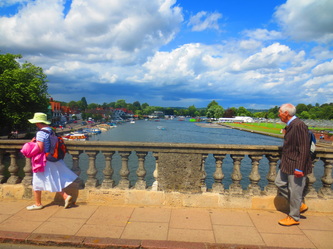
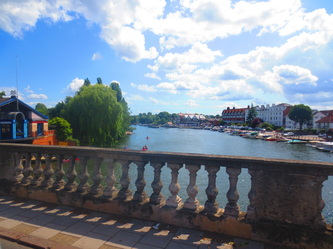
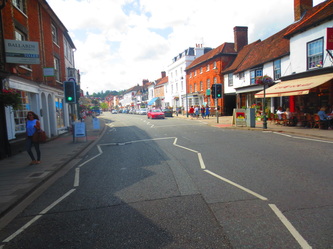
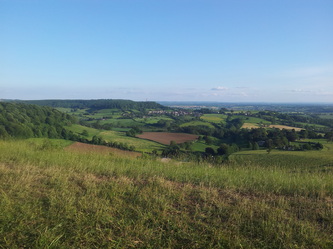
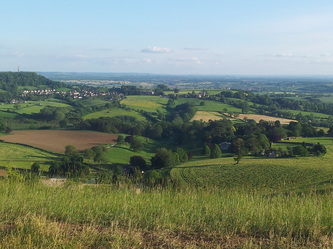
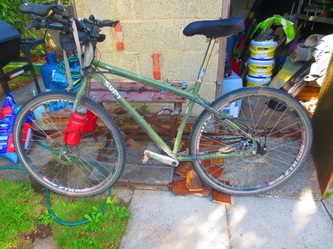
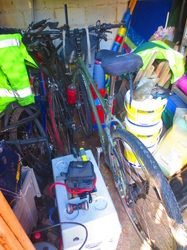
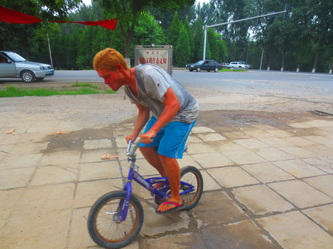


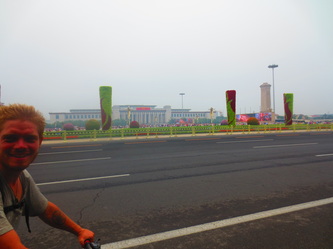
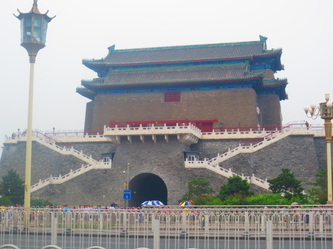
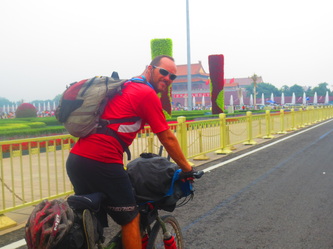
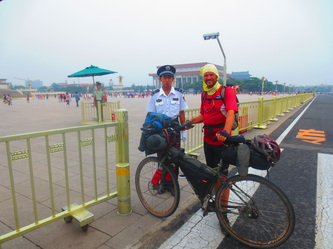
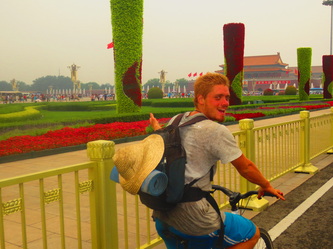
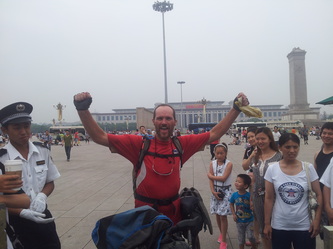

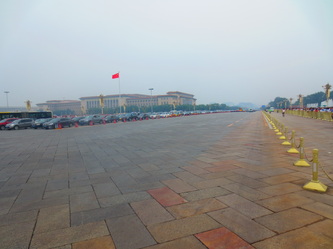


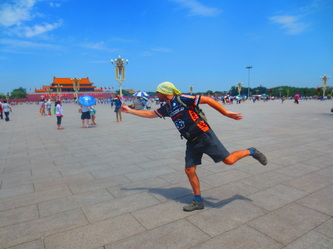
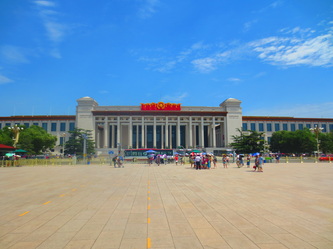
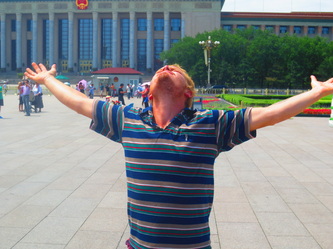
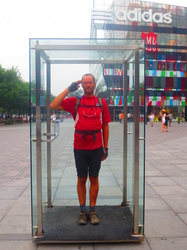

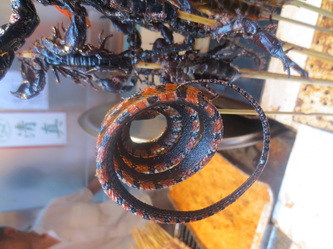

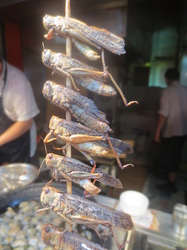

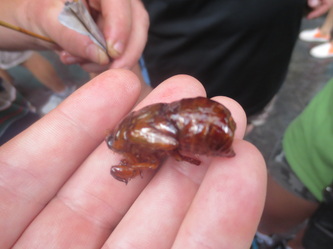
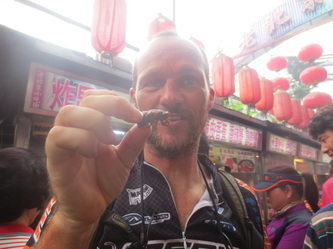
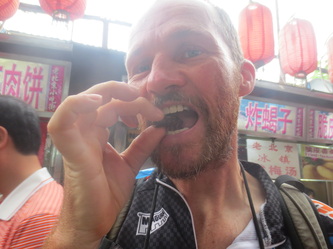


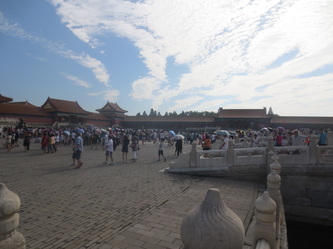
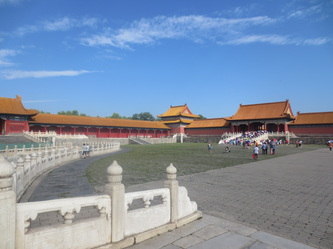

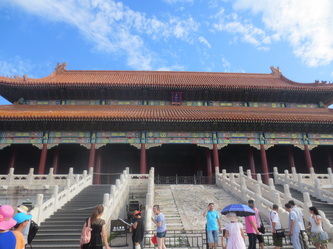


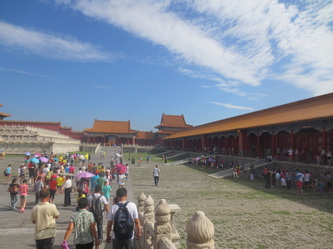
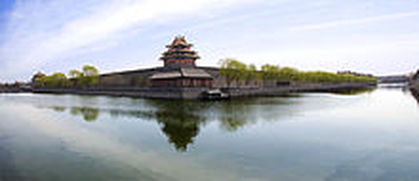
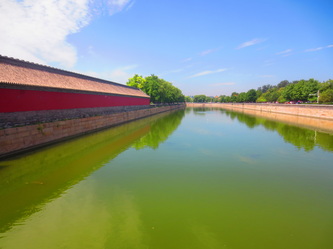
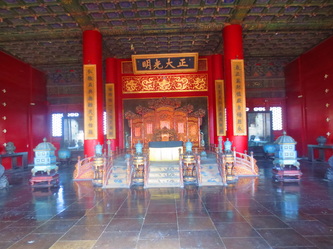
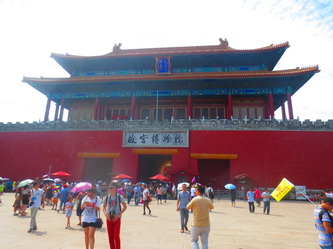
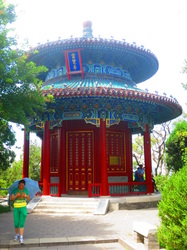
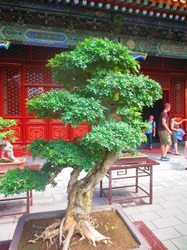
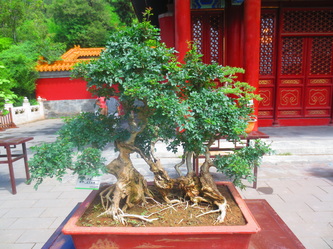

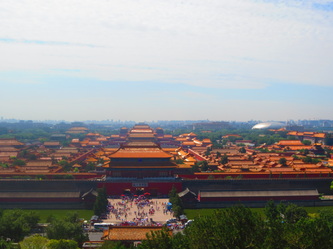

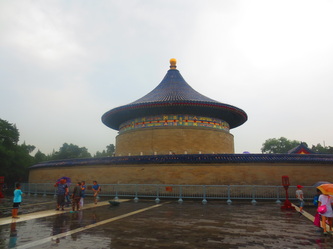

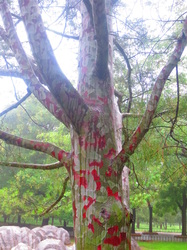
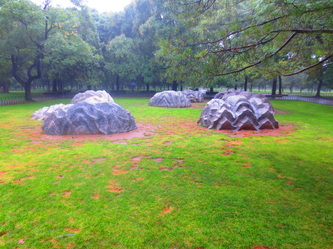
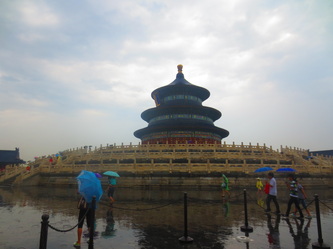
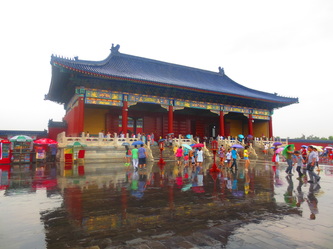
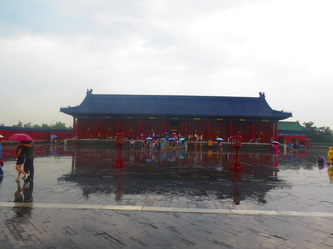
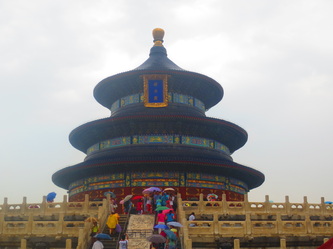
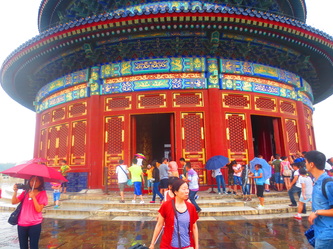


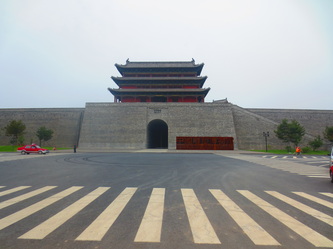
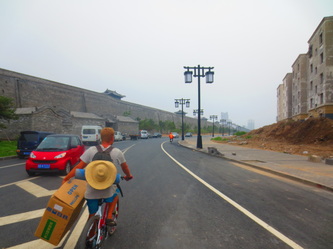
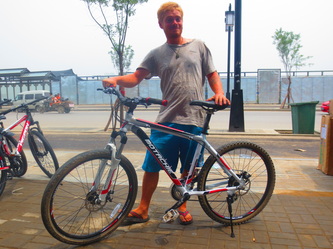
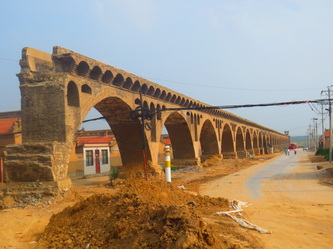

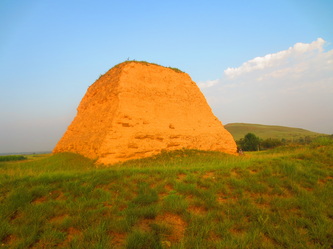
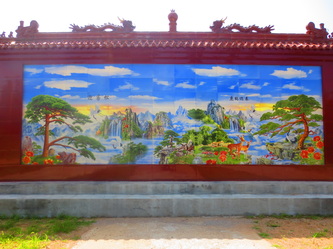


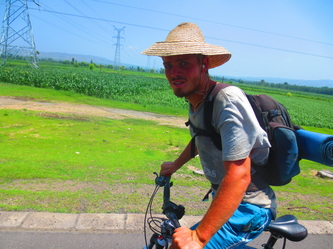

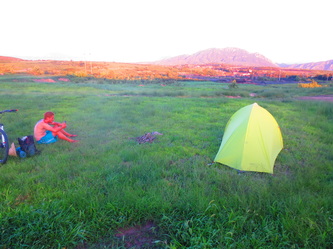
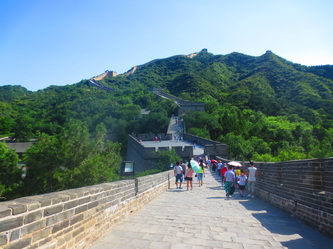

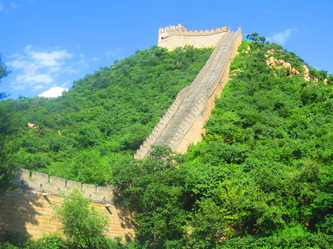
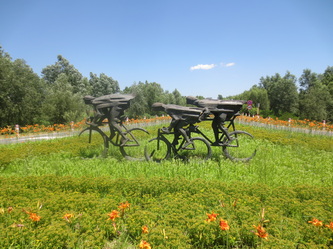



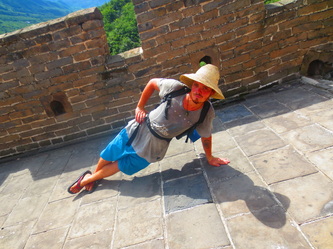


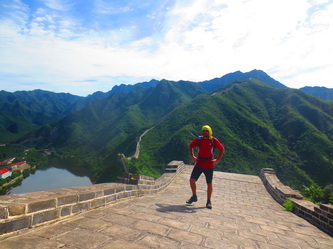

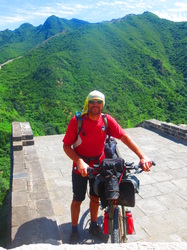
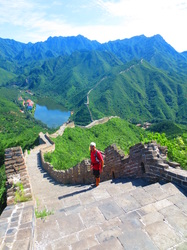
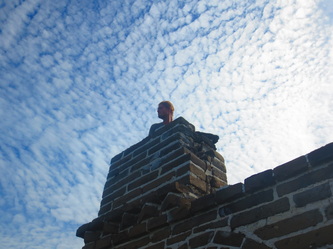
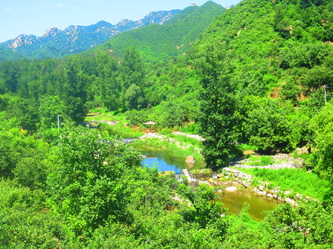

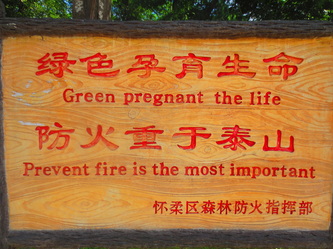

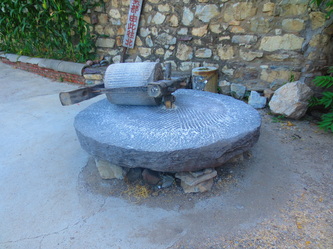
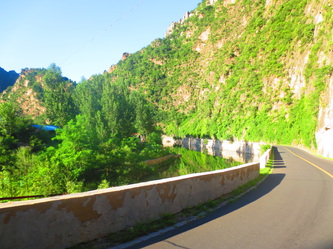
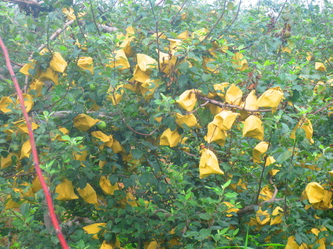
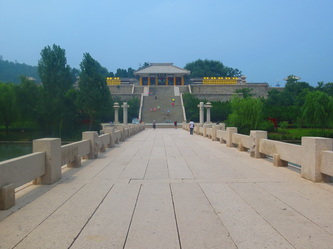

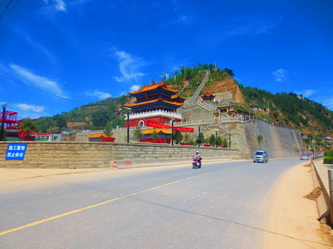


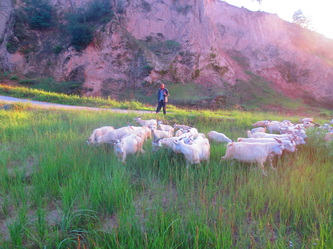
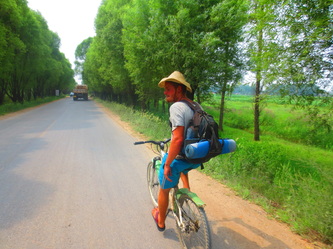

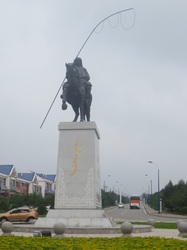
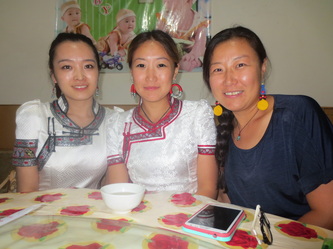


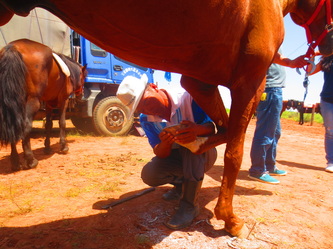
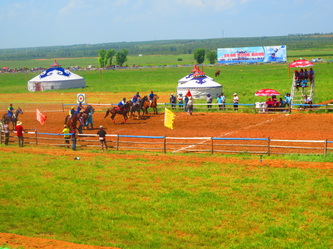

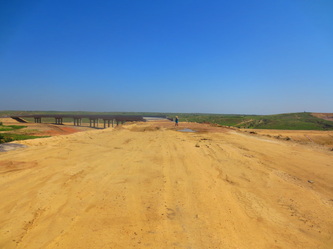
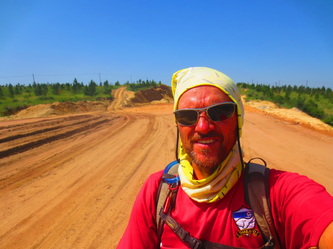




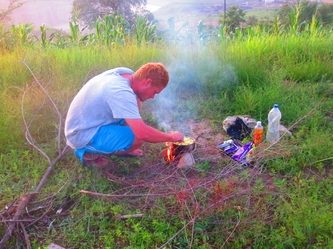

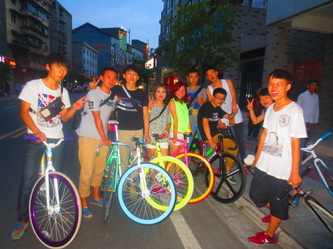
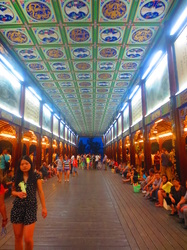
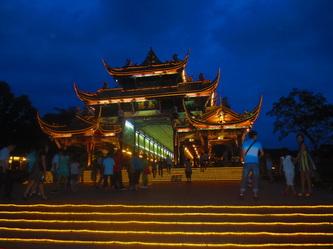



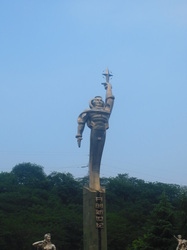





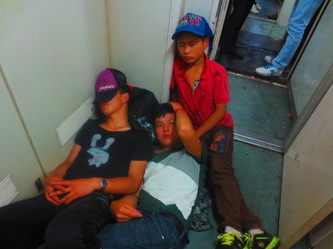
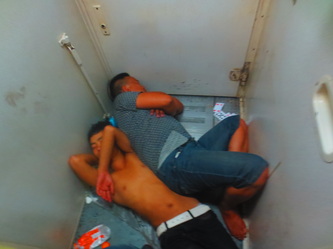
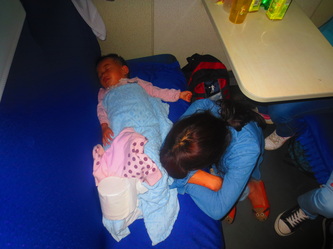

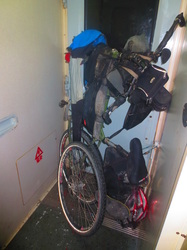

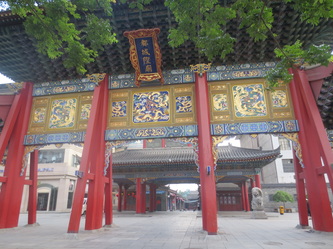
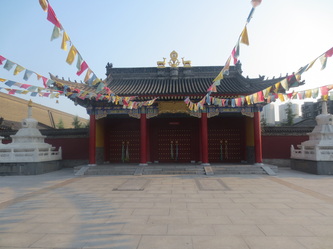


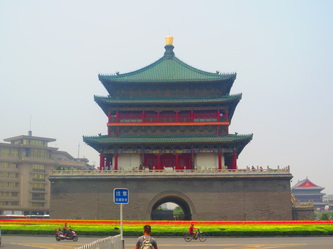
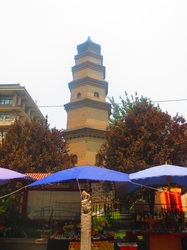
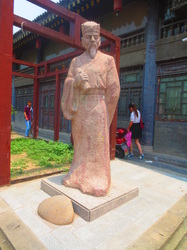
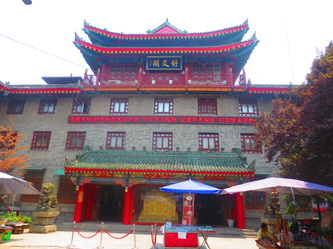
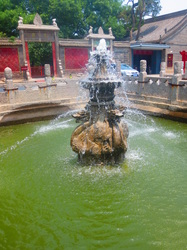


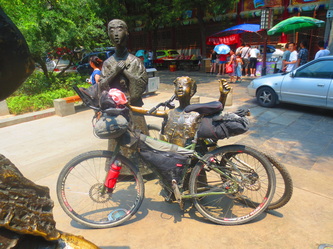

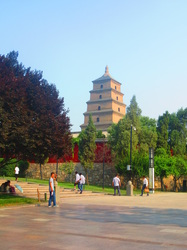
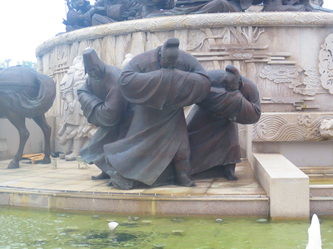
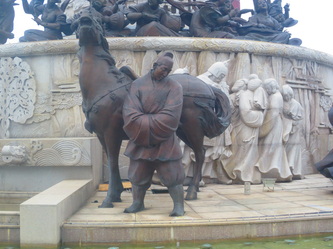

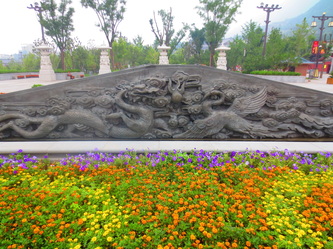

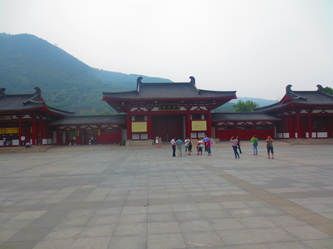
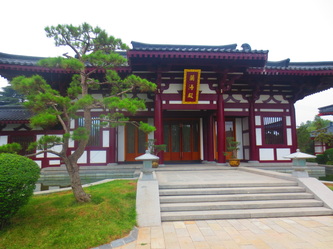


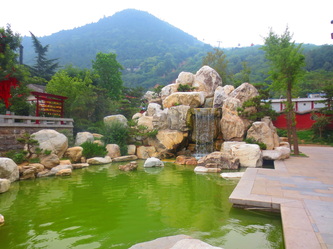

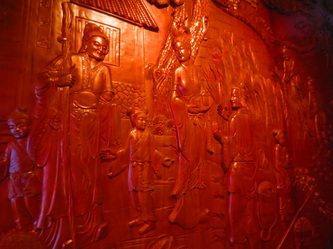
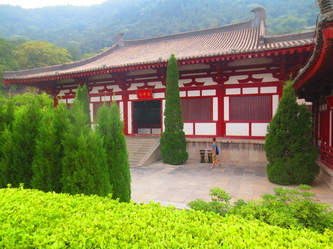
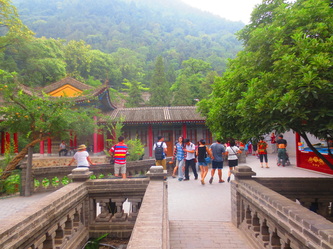


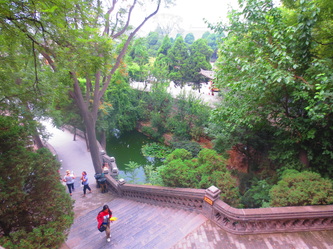

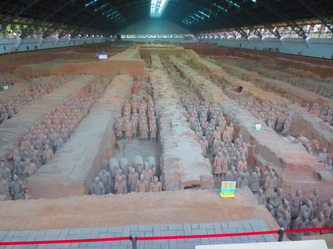
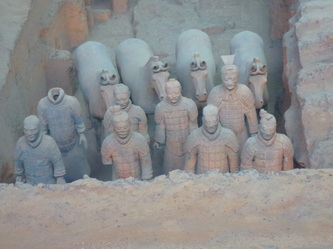
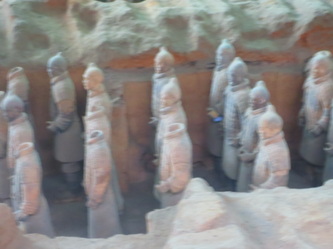
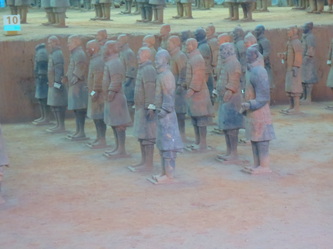
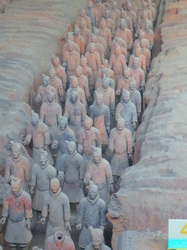
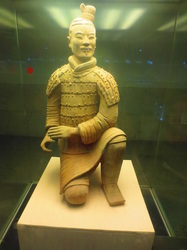


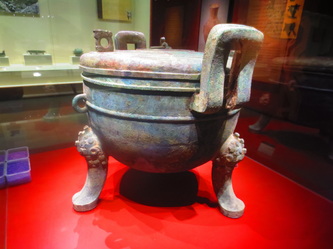
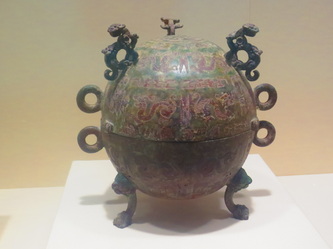

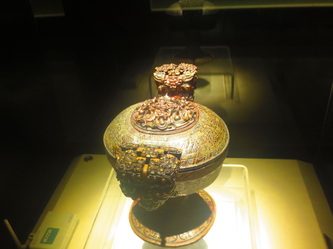
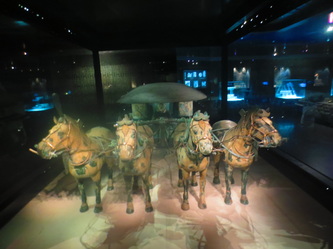

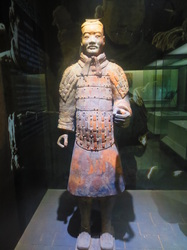
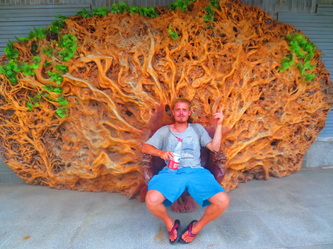
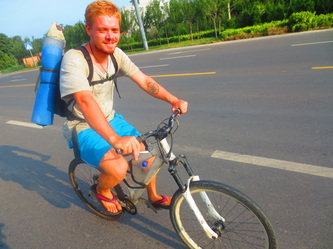
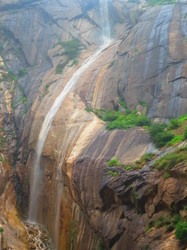
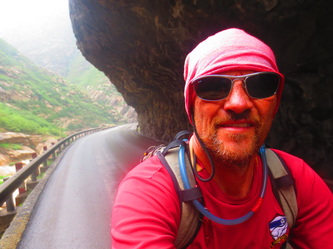
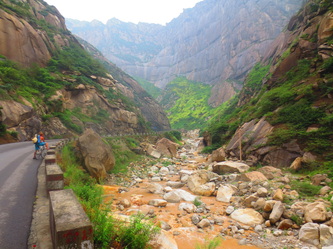

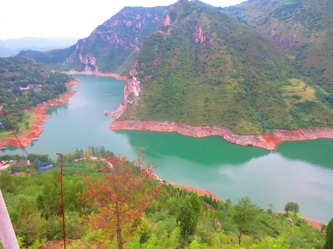
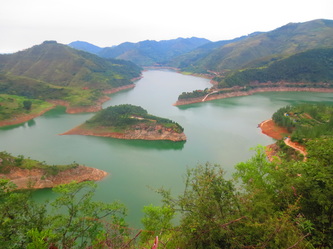
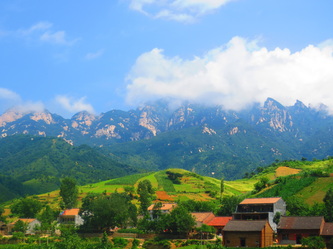


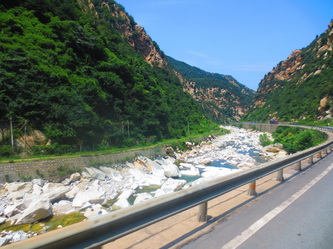
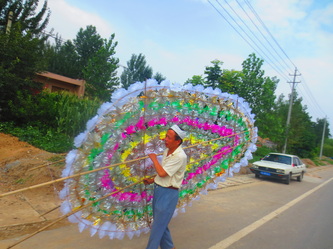
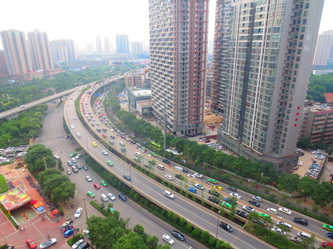
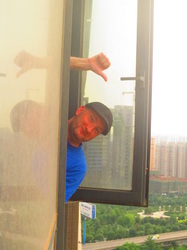
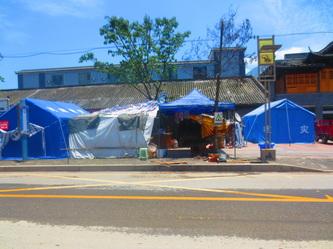
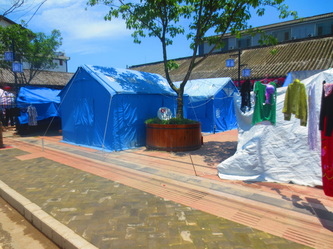
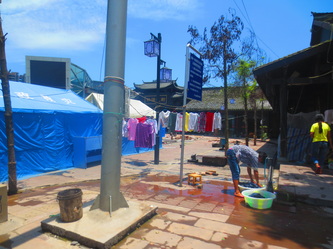
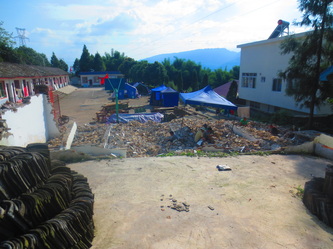
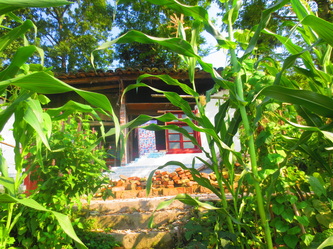
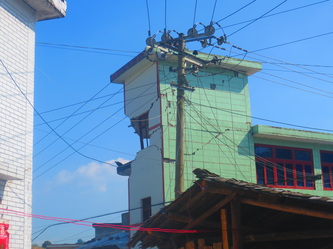
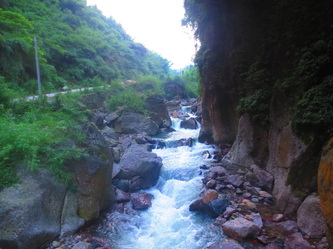
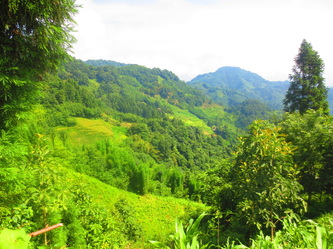

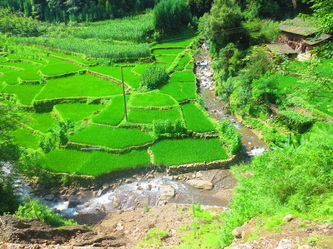

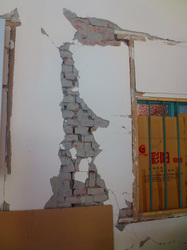
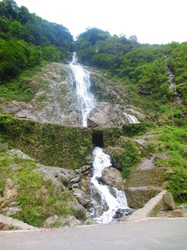

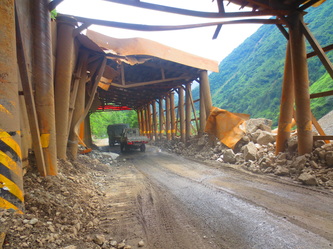
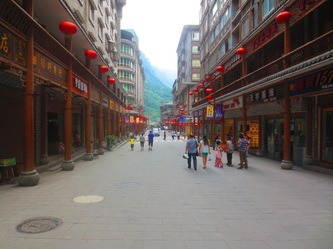
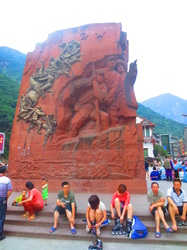
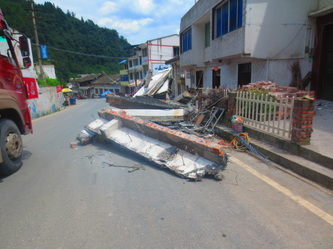
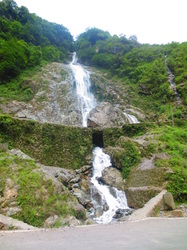
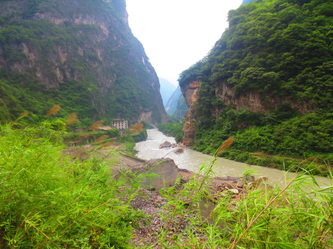
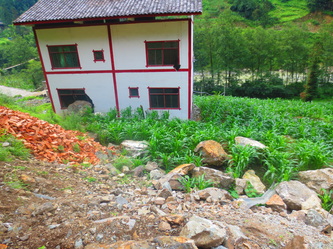

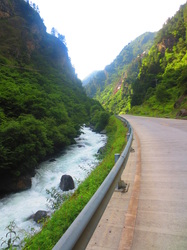

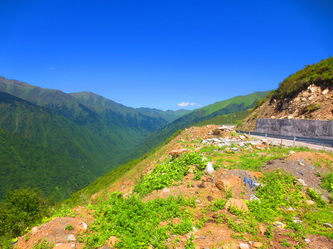
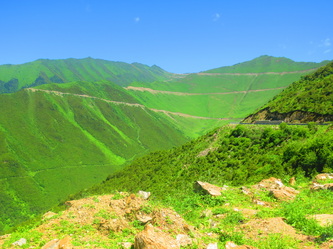


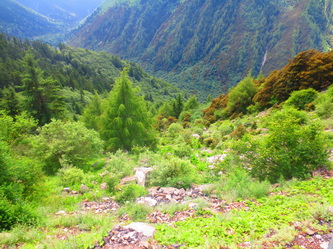
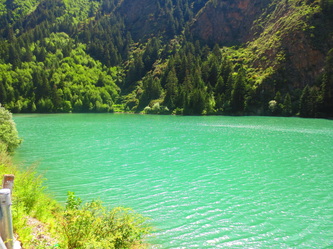
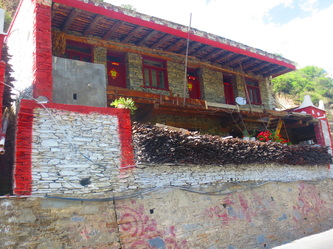


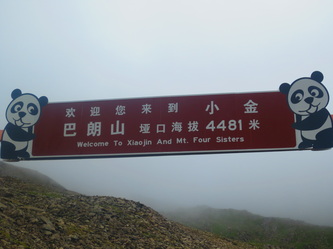
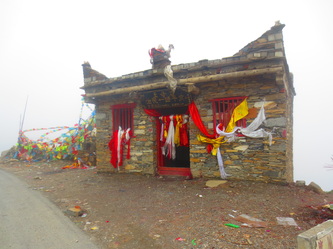
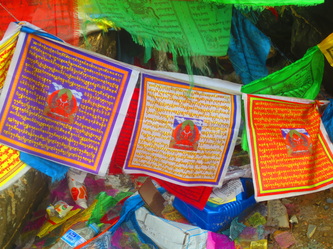




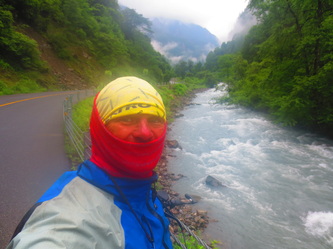

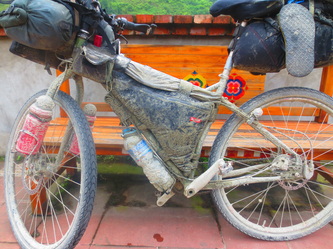
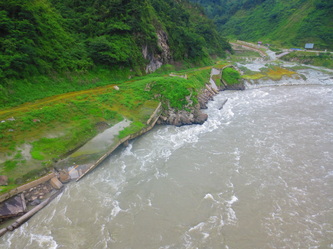
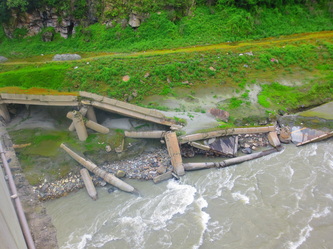

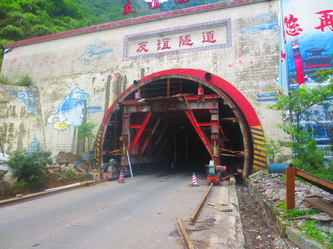
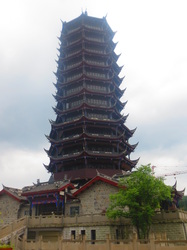
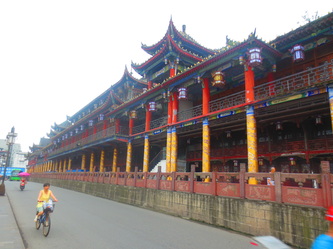
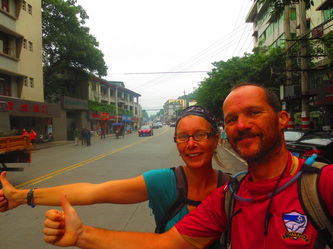
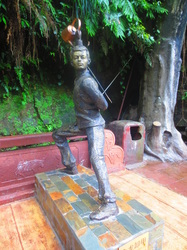
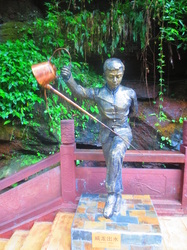
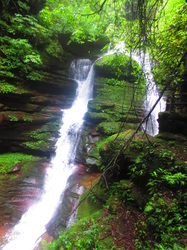

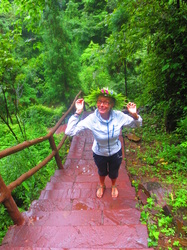
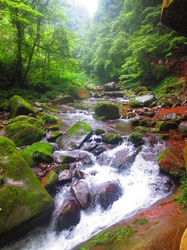



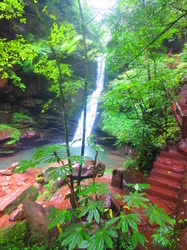
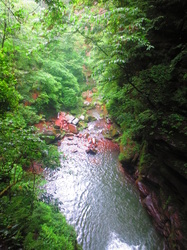
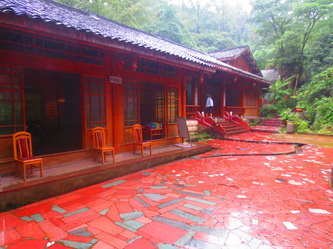
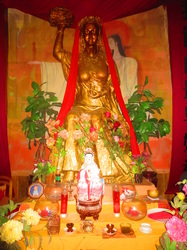

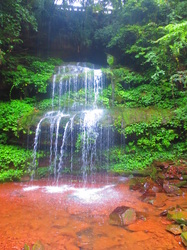


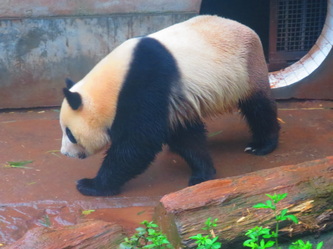

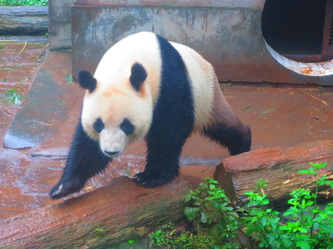
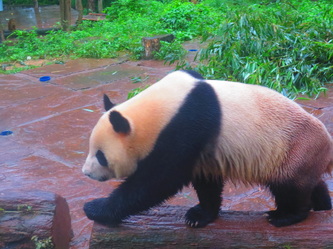
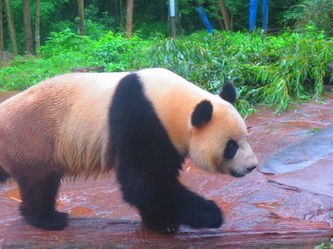
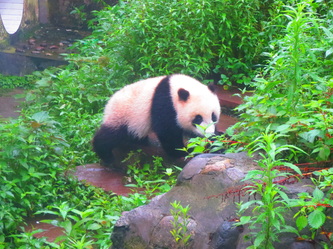

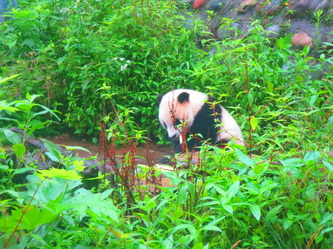

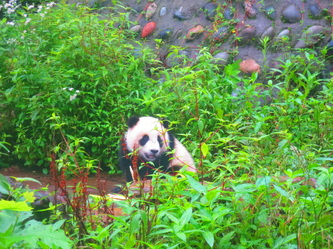

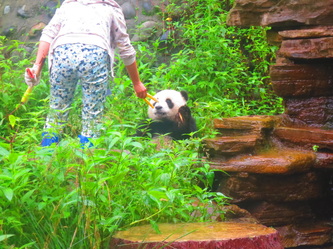
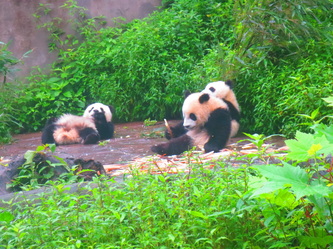
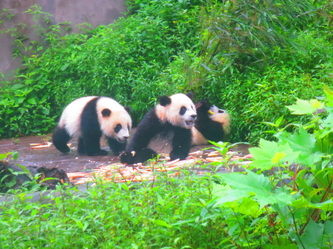

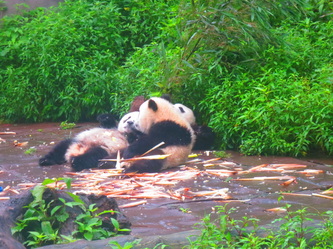

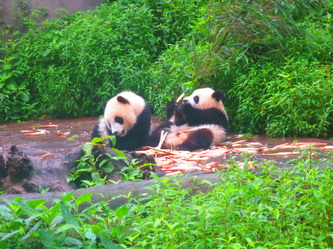
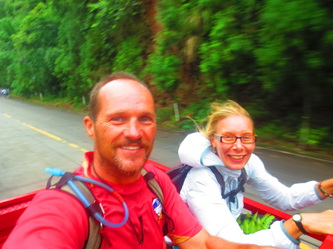
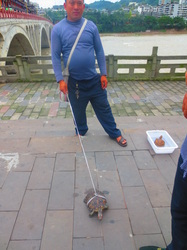
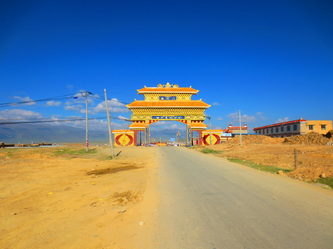
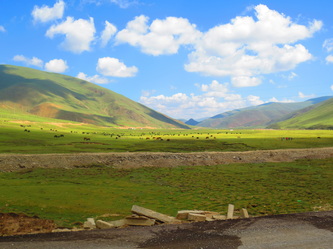
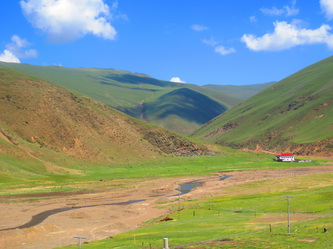
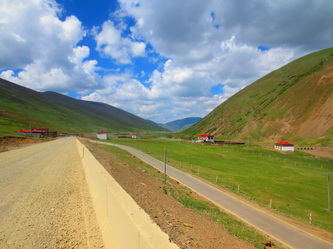
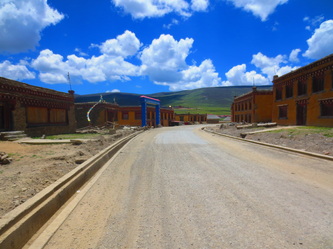
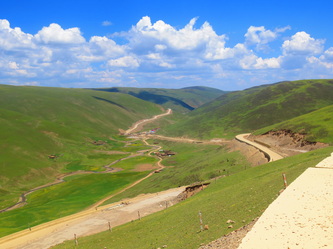
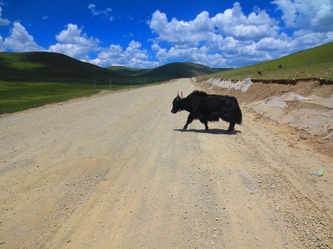
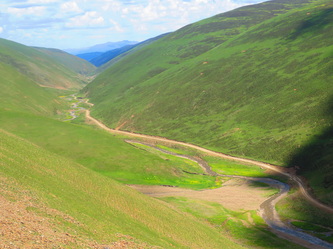
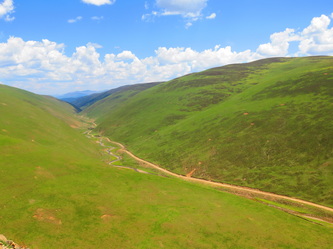

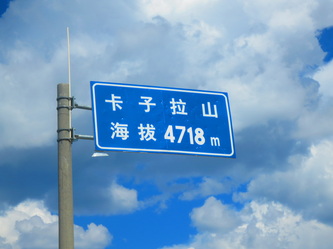
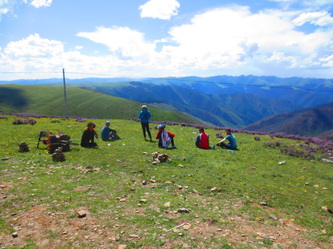
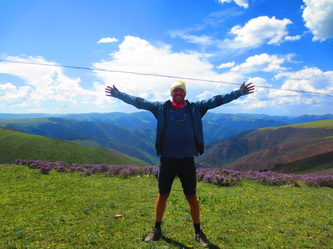

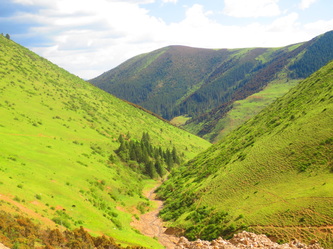

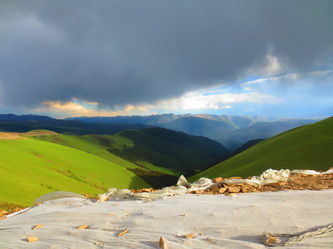
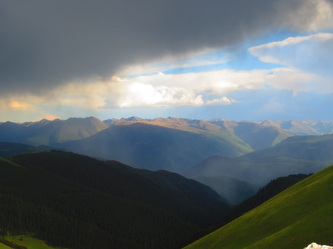
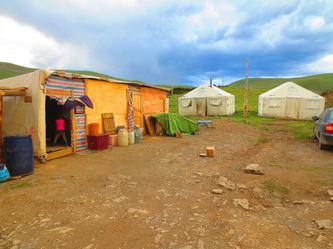
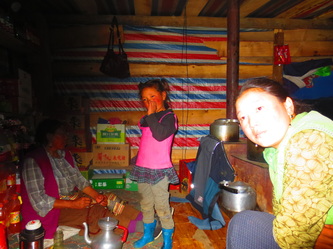
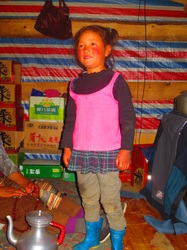
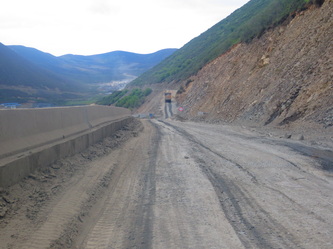
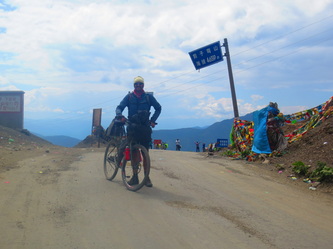
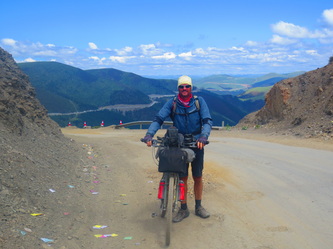
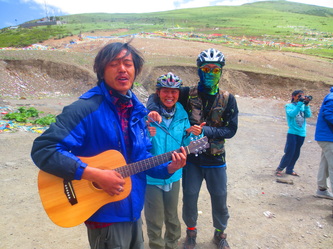
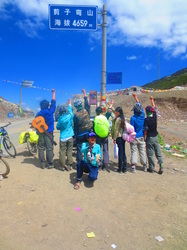
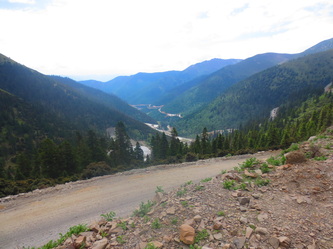
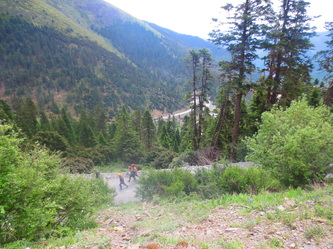
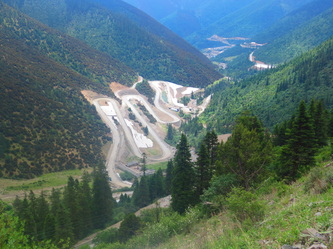


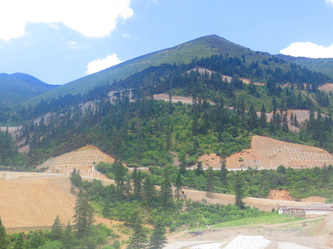
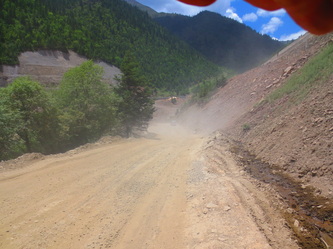

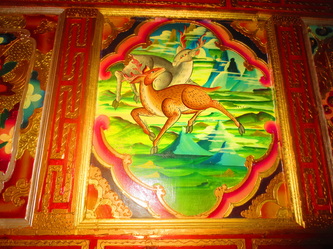



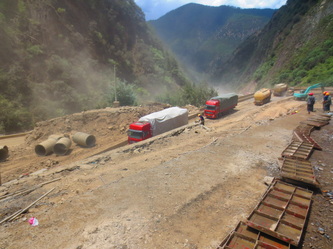
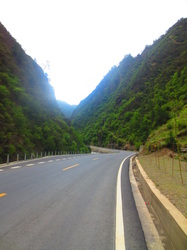




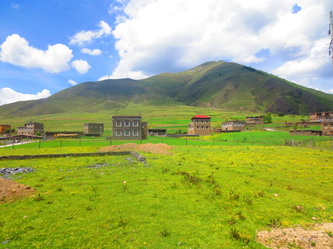
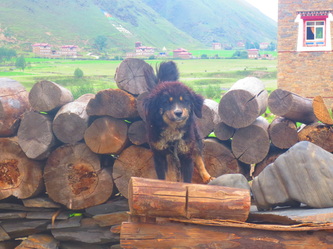
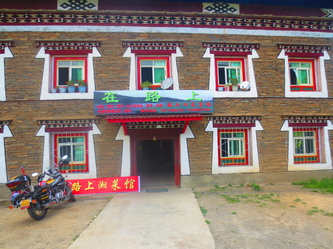
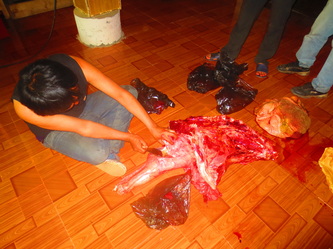
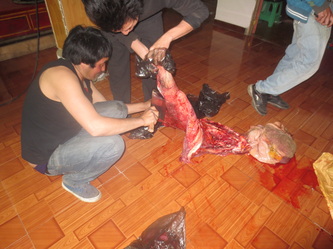
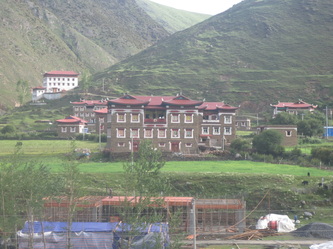
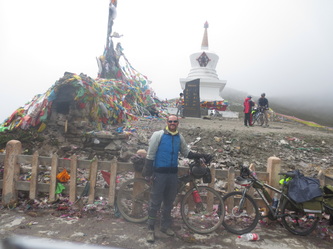
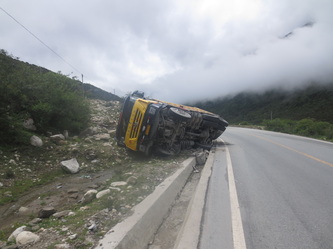
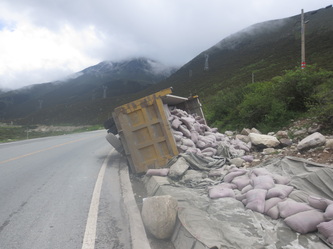
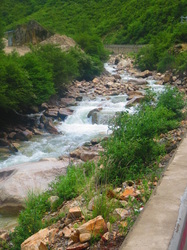

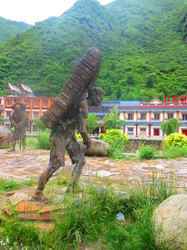
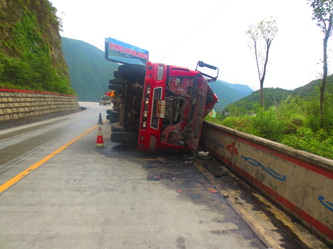


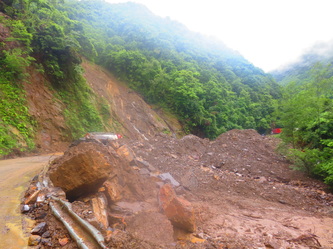
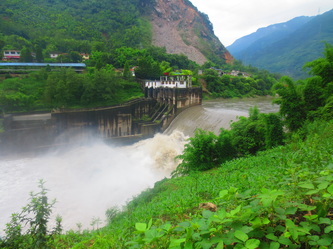

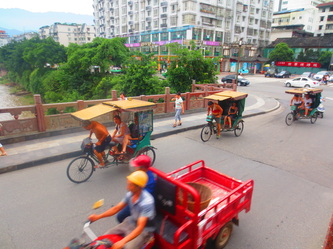
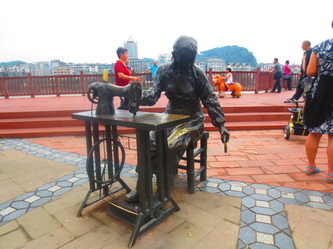
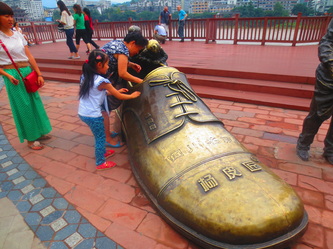


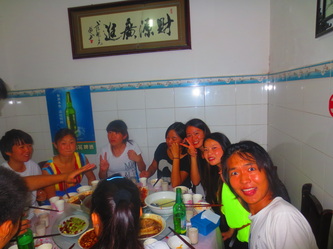
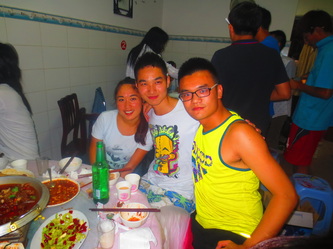
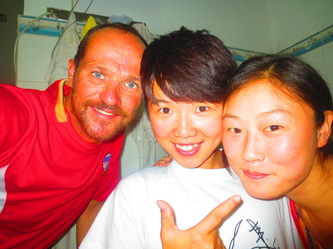



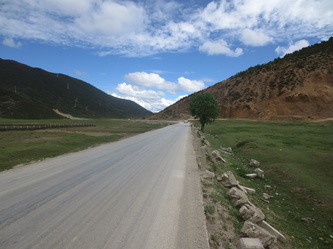




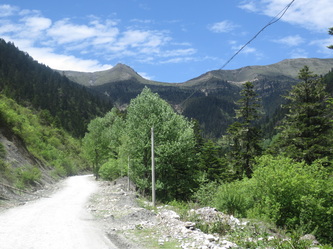
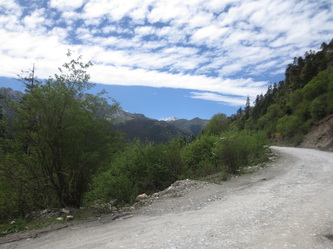
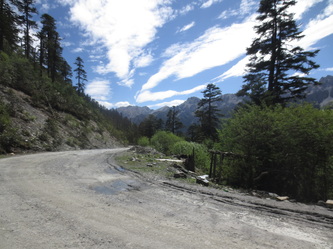
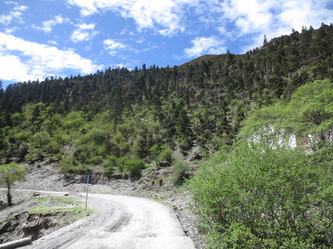
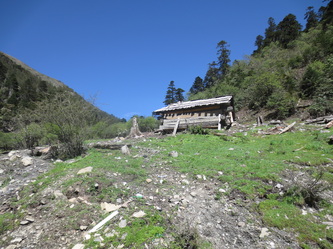
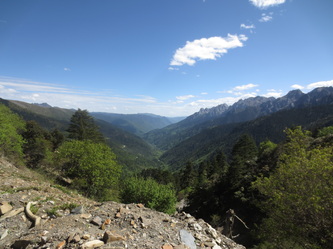
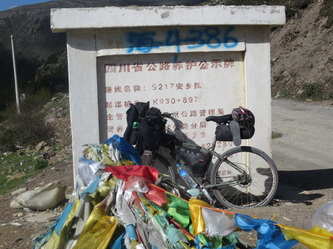
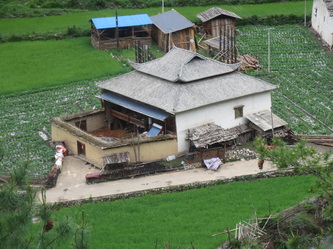

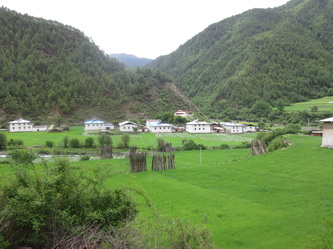

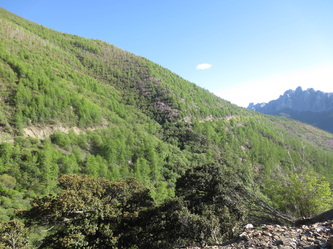
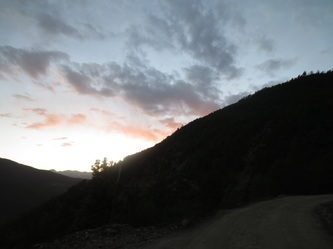
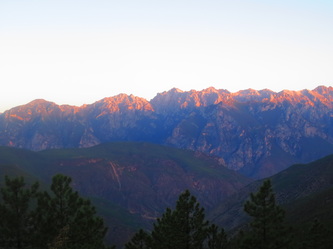
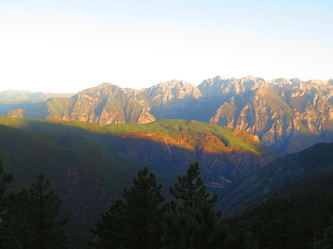

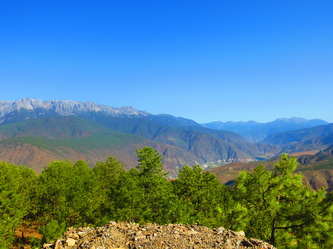




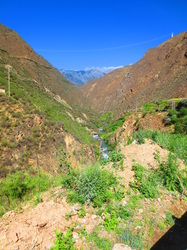
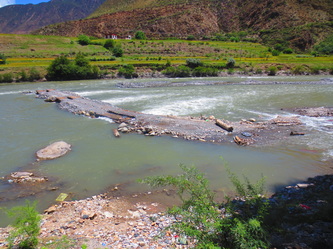

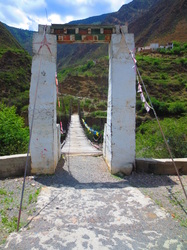
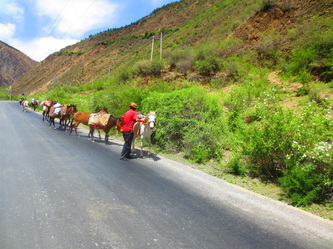
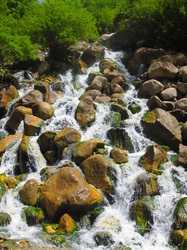


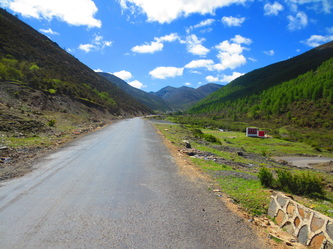

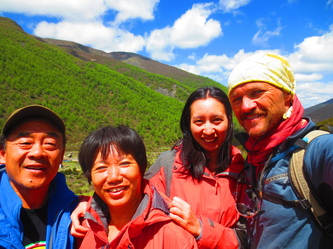


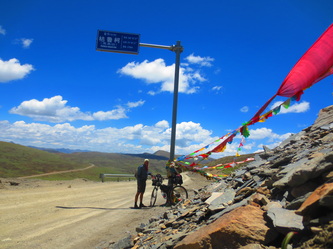
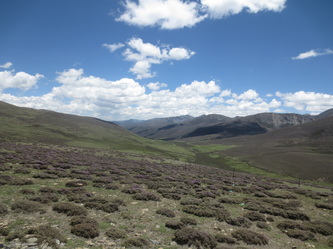
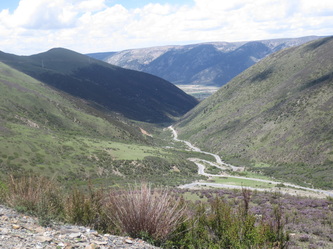
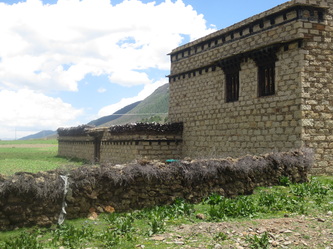
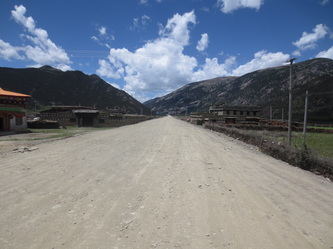
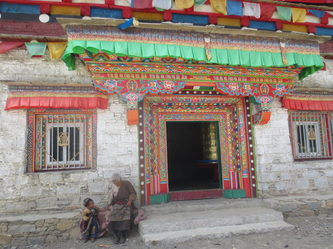

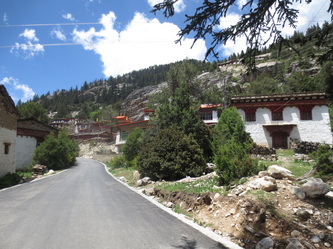
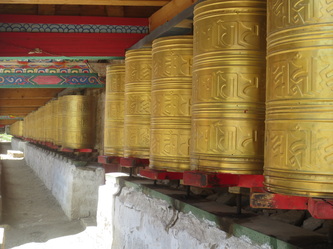
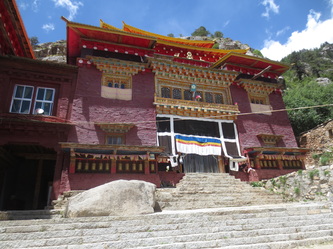

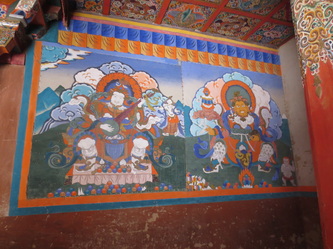



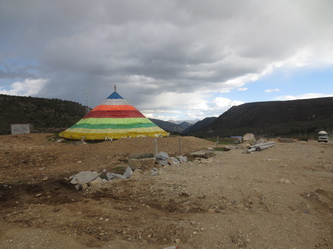
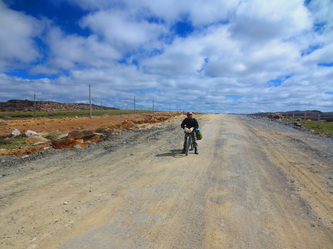
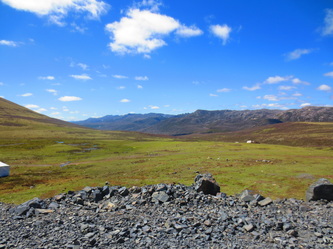
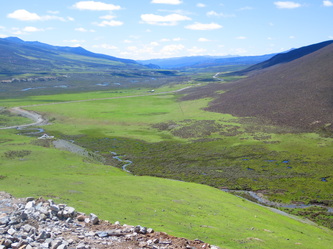
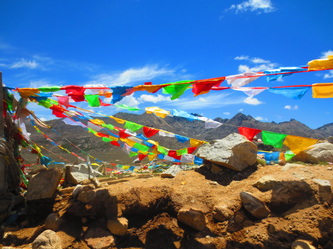
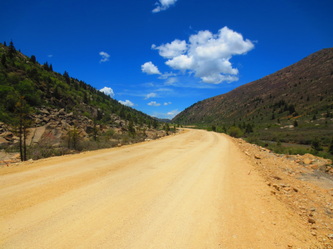





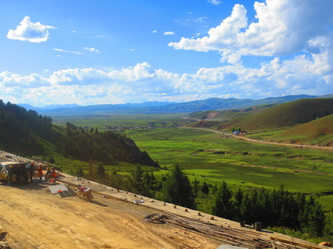
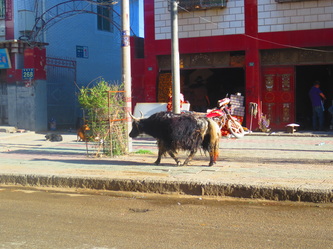
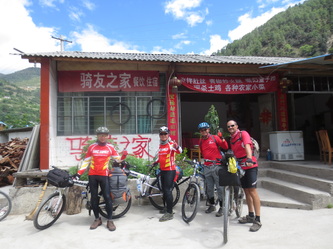
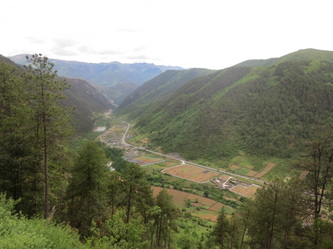
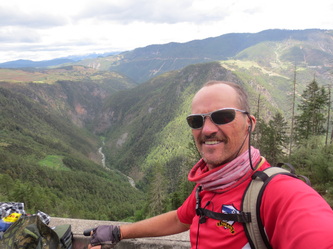
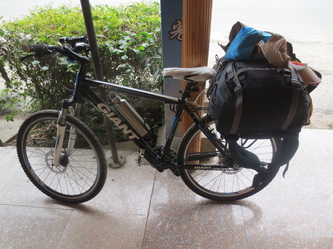
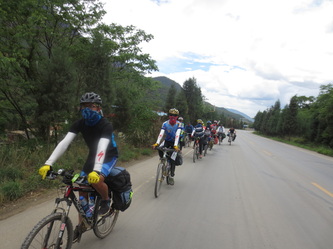
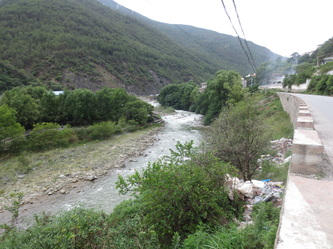
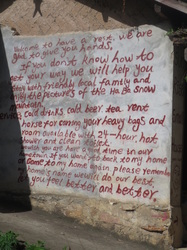
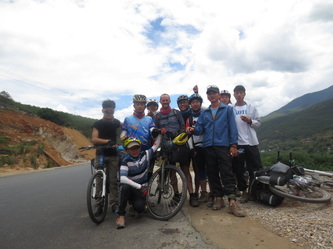

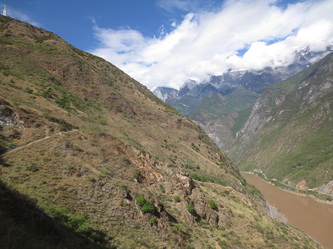
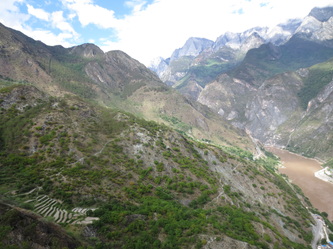
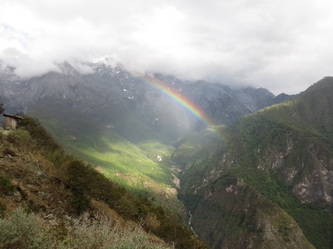
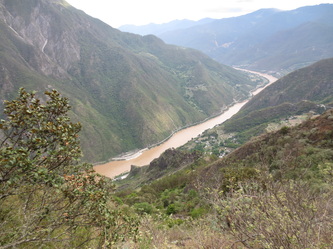
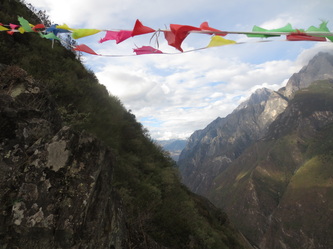
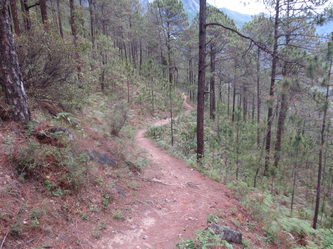
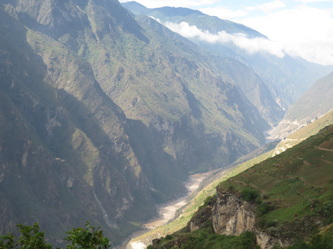
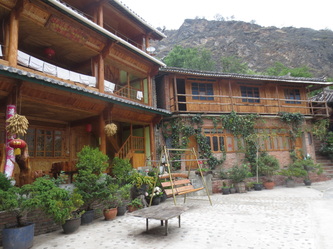

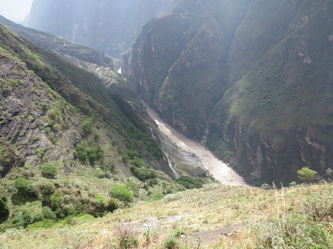





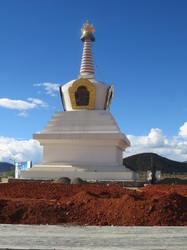

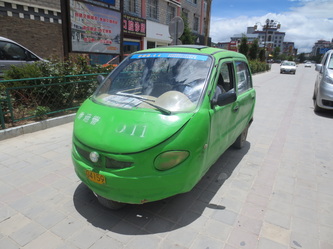
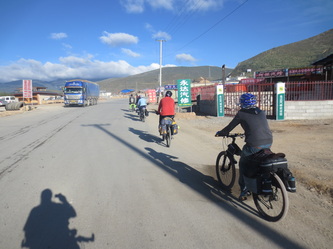
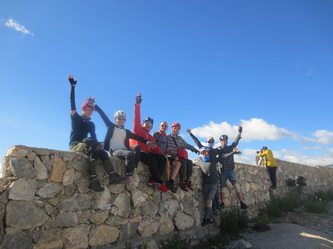

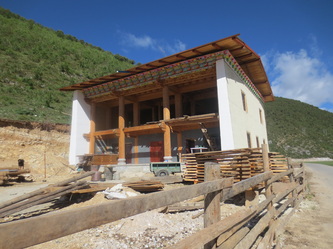
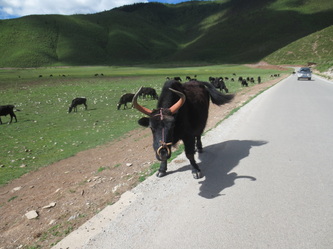
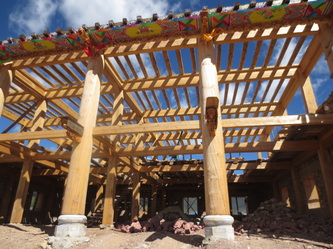
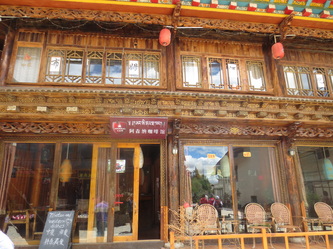
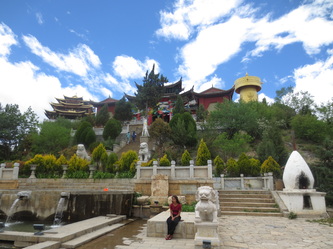
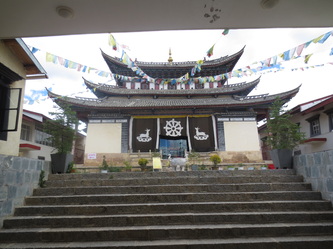
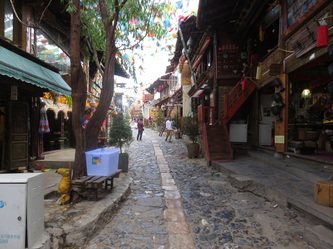
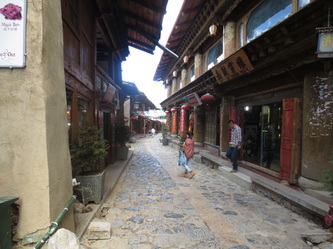

 RSS Feed
RSS Feed